UNDERWATER CYPRUS
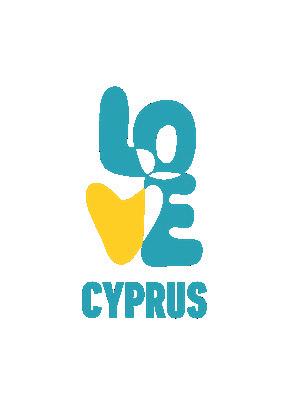




The guide was created to provide a comprehensive look at the underwater attractions of the Mediterranean Sea off the coast of the Republic of Cyprus in one place, without having to search the Internet.
Of the many dive spots available along the entire length of the island’s coastline, we decided to present to you the most interesting and in our opinion worth visiting spots.
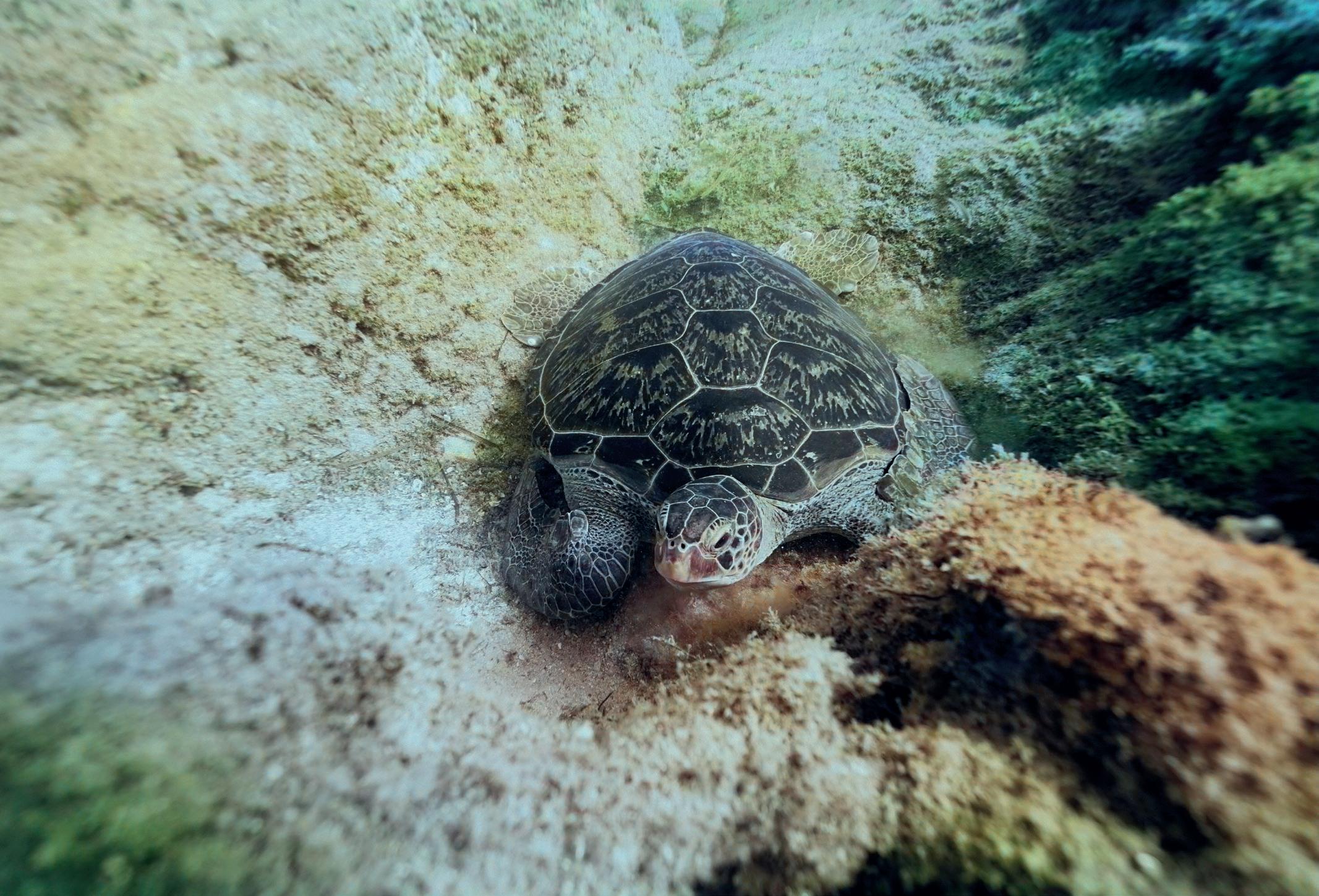
Diving is popular in Cyprus because the conditions for water sports, including diving and freediving, are excellent. The Mediterranean Sea here is pleasantly warm, the waters clear, reaching up to several tens of metres of visibility. The infrastructure will satisfy every diving enthusiast. On the Island of Aphrodite there are a great number of diving centres, scattered from one end to the other. Finally, Cyprus is the ideal place to start your diving adventure, as well as to develop your skills. Among the dive
sites there are those for beginners, as well as those available for advanced divers and so-called technical divers.
In the Guide we do not focus on the rich history of Cyprus, we do not tell you about the culture and art. We want to show what is under the water. The rich and varied marine life, the wrecks and their submerged secrets, the animate and inanimate nature.
However, as a diver does not live by diving alone, we will suggest to you what to eat on the island, what to try and where to relax with your family or a group of friends. We hope that the tourist and culinary suggestions between dives will also arouse your curiosity.
Enjoy the underwater exploration of one of the most interesting and warmest corners of Europe, despite the fact that geographically Cyprus belongs to Asia
All you have to do is find a flight, choose a proper area, arrive and dive to your heart’s content.


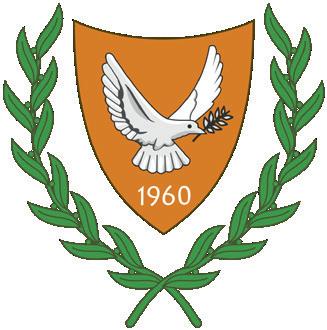
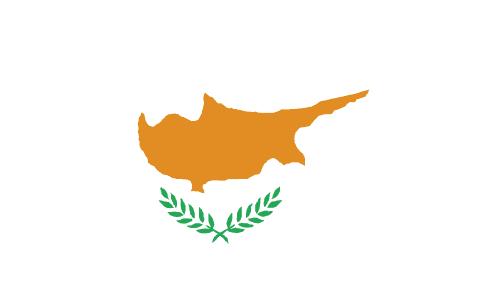
In front of you is a guide to a selection of the Island of Aphrodite’s dive spots, hopefully the best or most interesting ones.

Ideal for divers, free divers, lovers of the azure water and water sports, but also for those who accompany them.

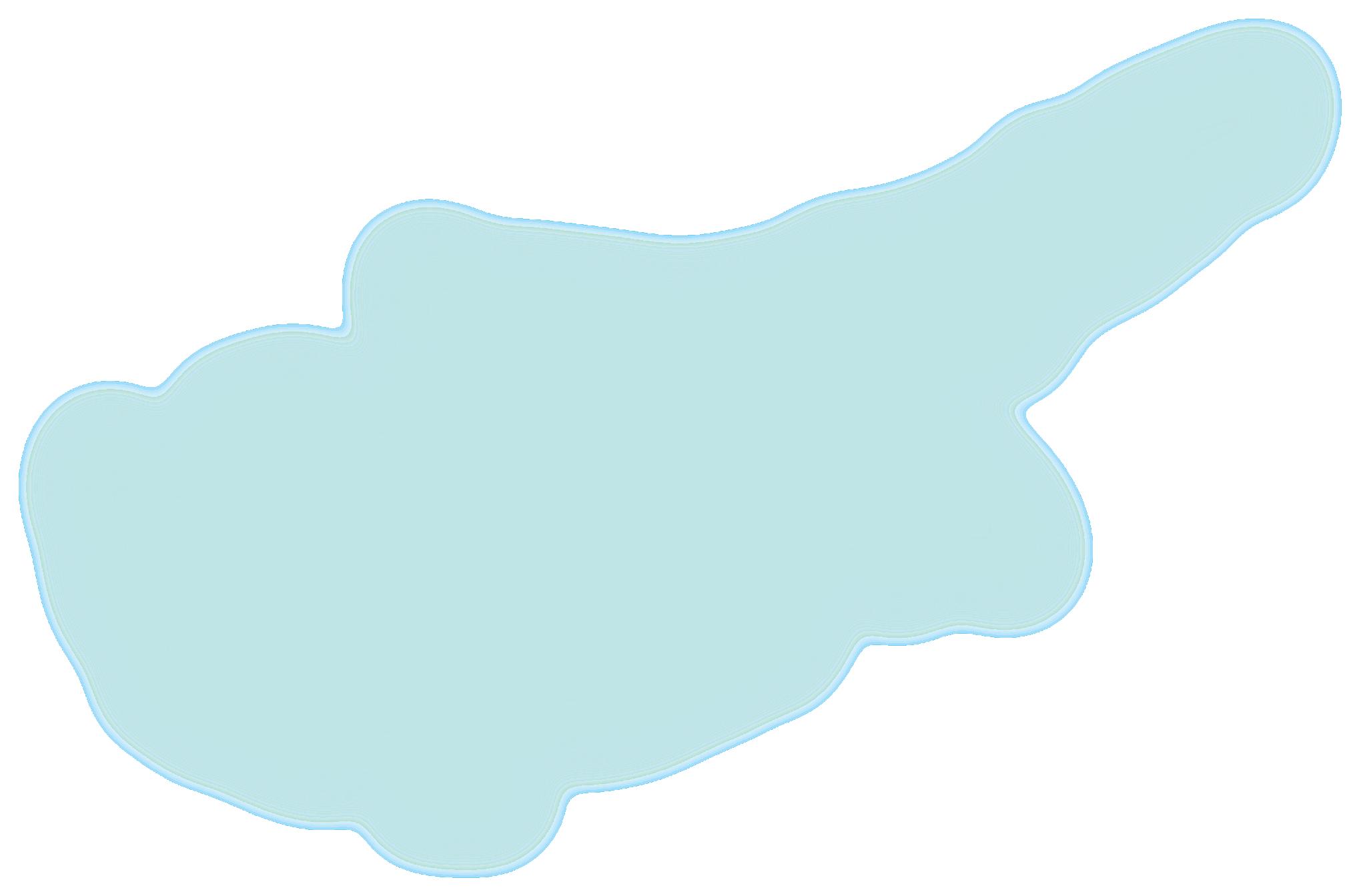
Cyprus appeals to all our senses. The smell of the ever-present cypress trees, the taste of local food, the sounds of the sea and the exhaled air, the variety of fauna, the roughness of millennia-old stones and their simultaneous smoothness. The island will provide us with all these stimuli and much more.
Cyprus is a place one should visit and experience. The country is magical and beautiful. Looking at the sea surface at different times of the day and in different places you will notice many shades of blue. Explore according to your own preferences.

Here, we offer you a dozen triedand-tested dive sites which in our opinion are worth visiting.
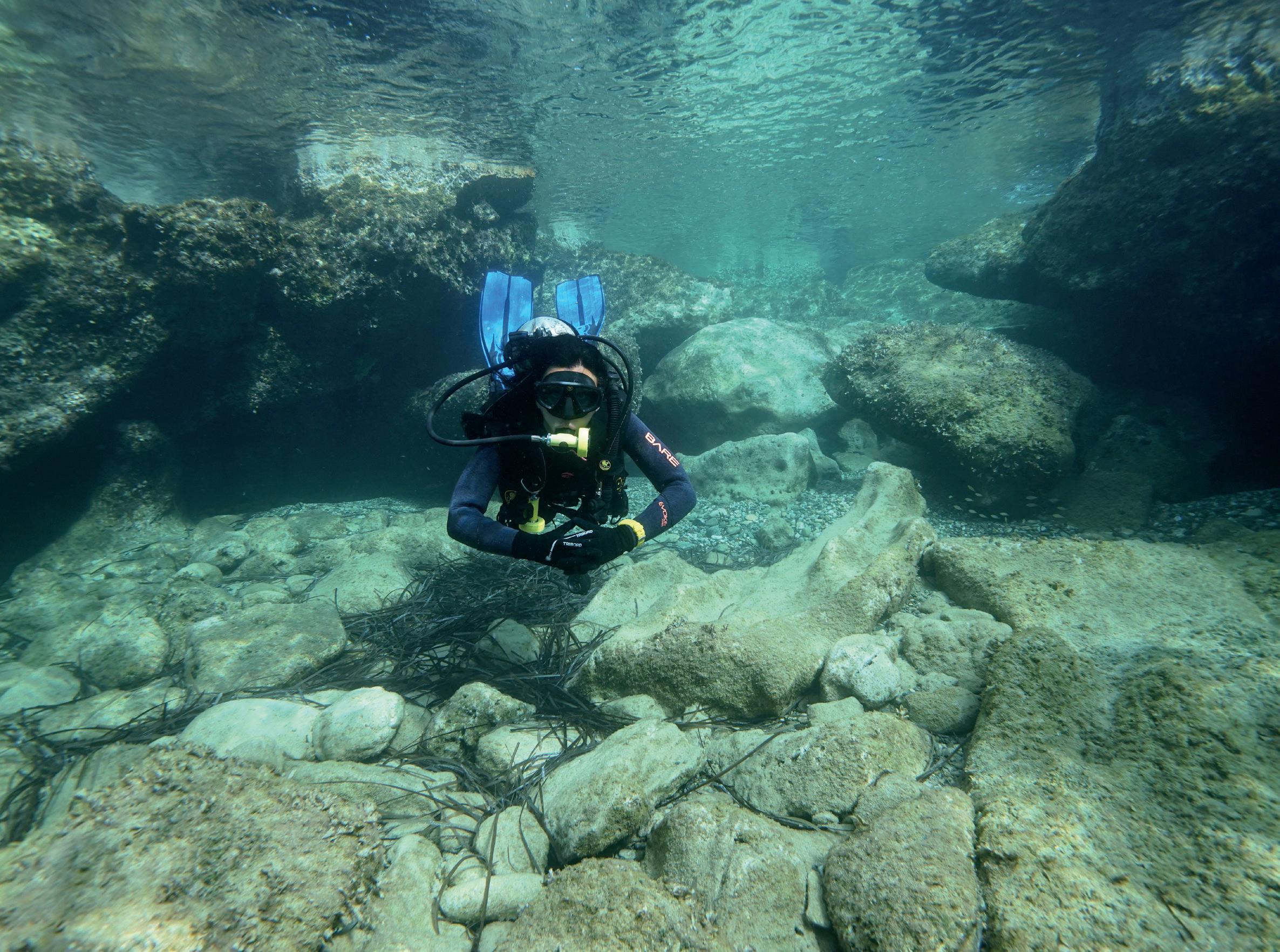
*For divers of all training levels, for advanced divers.
Akamas Peninsula – the most western part of Cyprus and habitat of many plant and wildlife species. Currently it has the status of a National Park. St. George’s Island is located near the shoreline. It is one of the most popular diving spots on this side of the island. Visibility ranges from 20 up to 40 m. The western wall of the island, which goes down to the depth of 40 m, and the south-eastern side of the island deserve a recommendation. Nudibranchs can be

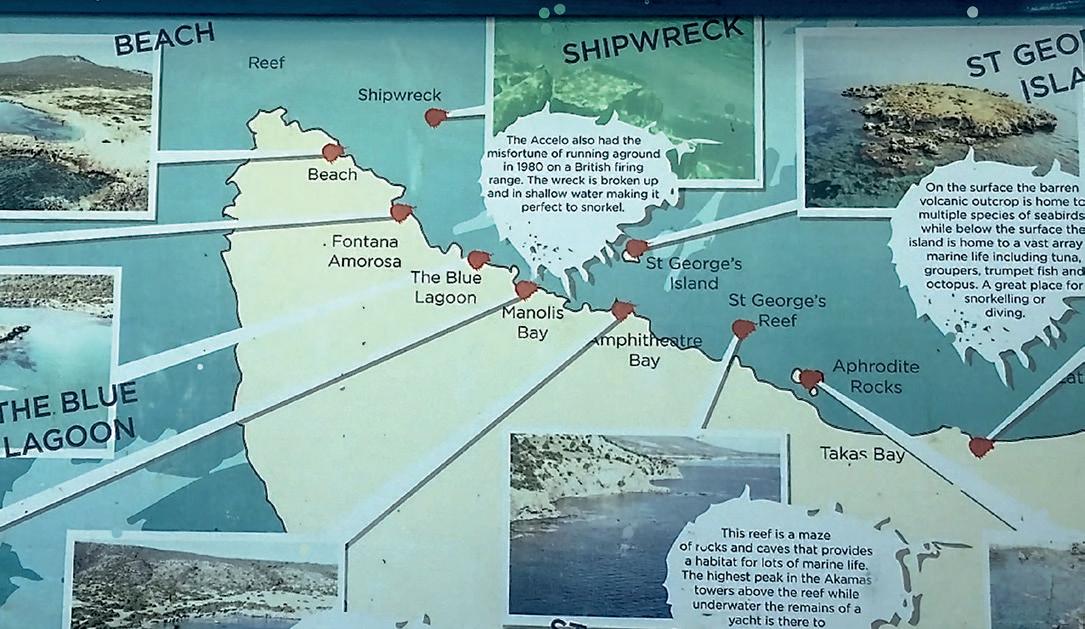
found at the bottom of the western wall and you might want to look for octopuses, moray eels, shrimps, bristle worms and others in its numerous crevasses. In the depths you will be accompanied by countless fish shoals. At the depth of 8 m, there is a grotto (bring a torch), which is the perfect place to end your dive. In addition to walls, the south-eastern side also offers tunnels. Groupers, cornetfish, barracudas and even squids can often be seen here, even during daytime. Marine life is the most plentiful at depth between 5 and 15 m. If you hold the appropriate certification, you can find 16th century anchors at a depth of 42 m.

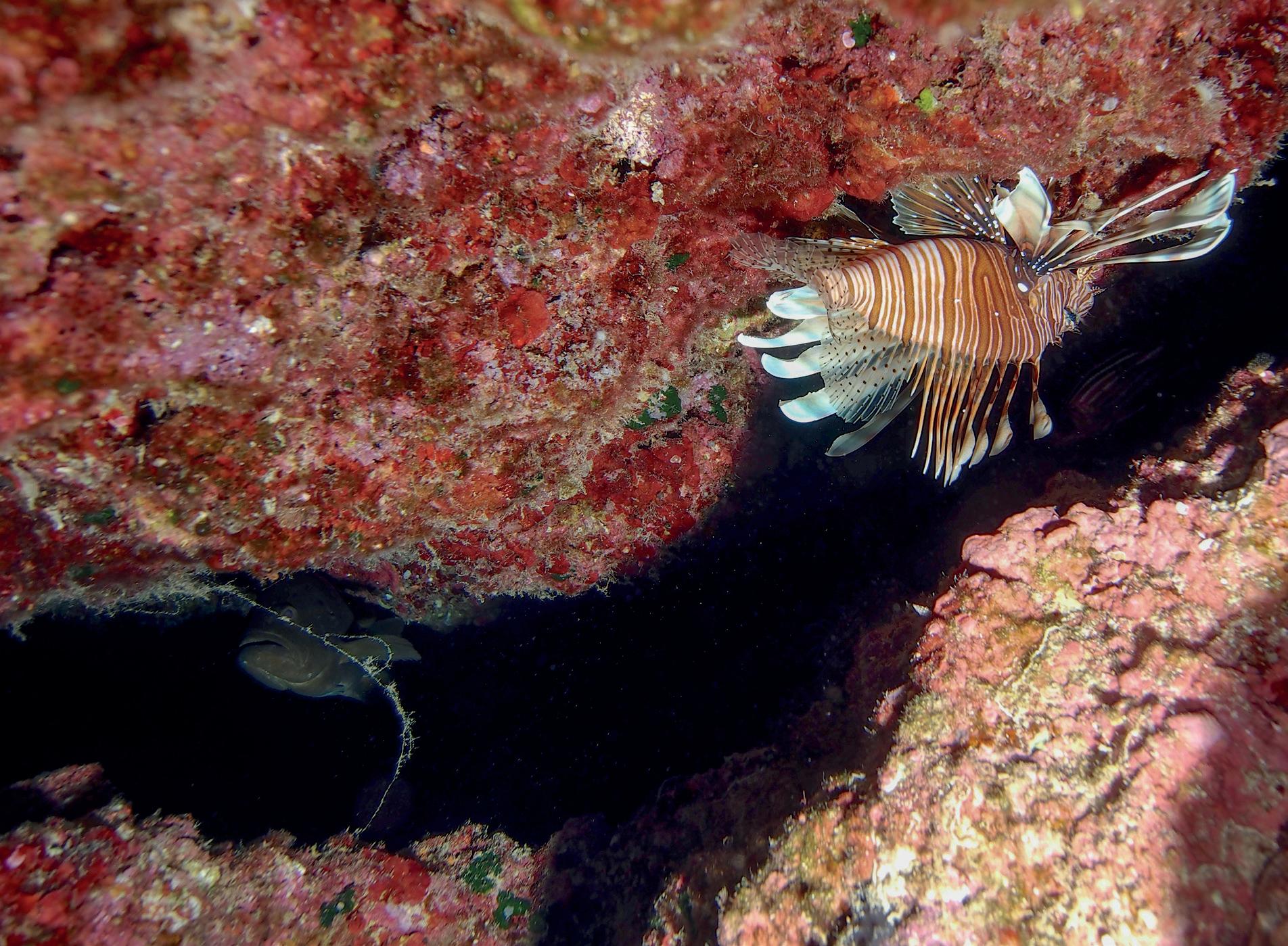
*For advanced divers, bring a torch.

This wreck lies on its keel on a silty bottom at the depth of 28 m. Laboe was brought to Cyprus in 2006. It had already traveled many marine miles, as it was built in 1940, at the Rendburg shipyard in Germany. After 8 years, it was qualified to be sunk as part of the project of creating artificial reefs and marine parks in 2014. It has become a diving attraction and a habitat for many marine species ever since. In 2020, the marine biologists who monitor such objects observed the presence of 14 different species of corals.
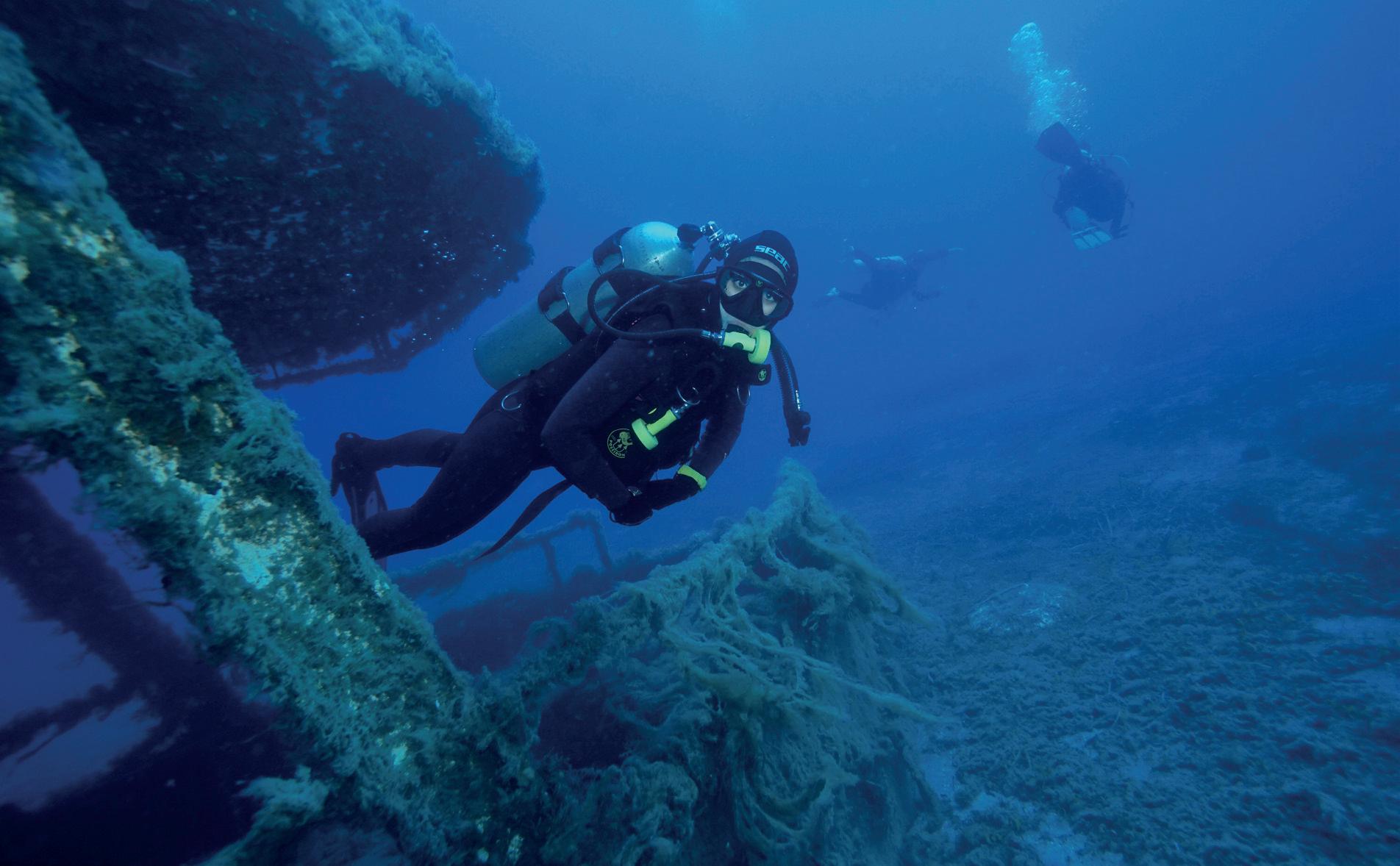
A big advantage of this place is that Laboe is located on the territory of a marine park, which is protected by fishing laws. It is an additional bonus for us, divers, because the wreck is full of life. We can find nudibranchs here, for example Pink Flabellina, as well as parrotfishes and different species of groupers, sometimes rays and flounders, shoals of common two-banded seabreams and saddled seabreams and, recently, also the ubiquitous lionfish.
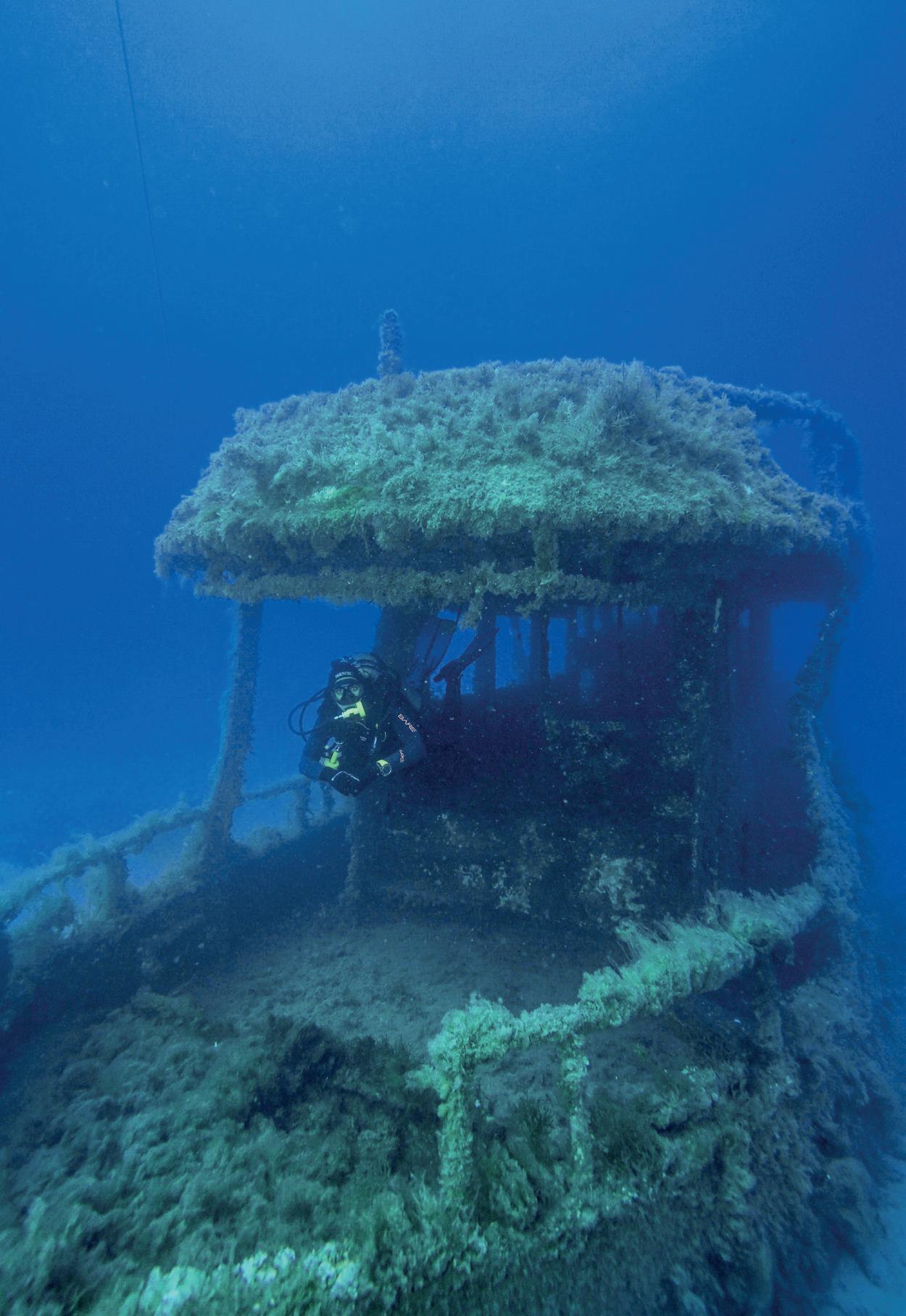
The interior of the wreck is also available and its penetration is relatively easy. All windows have been removed from the “saloon” deck, so natural light reaches the interior. You can swim to the machine room or exit through the front windows. The machine room itself holds an intact engine (it’s usually better to be the first diver in rather than the last one). Bringing a torch here is a good idea, as this is the darkest place in the wreck.


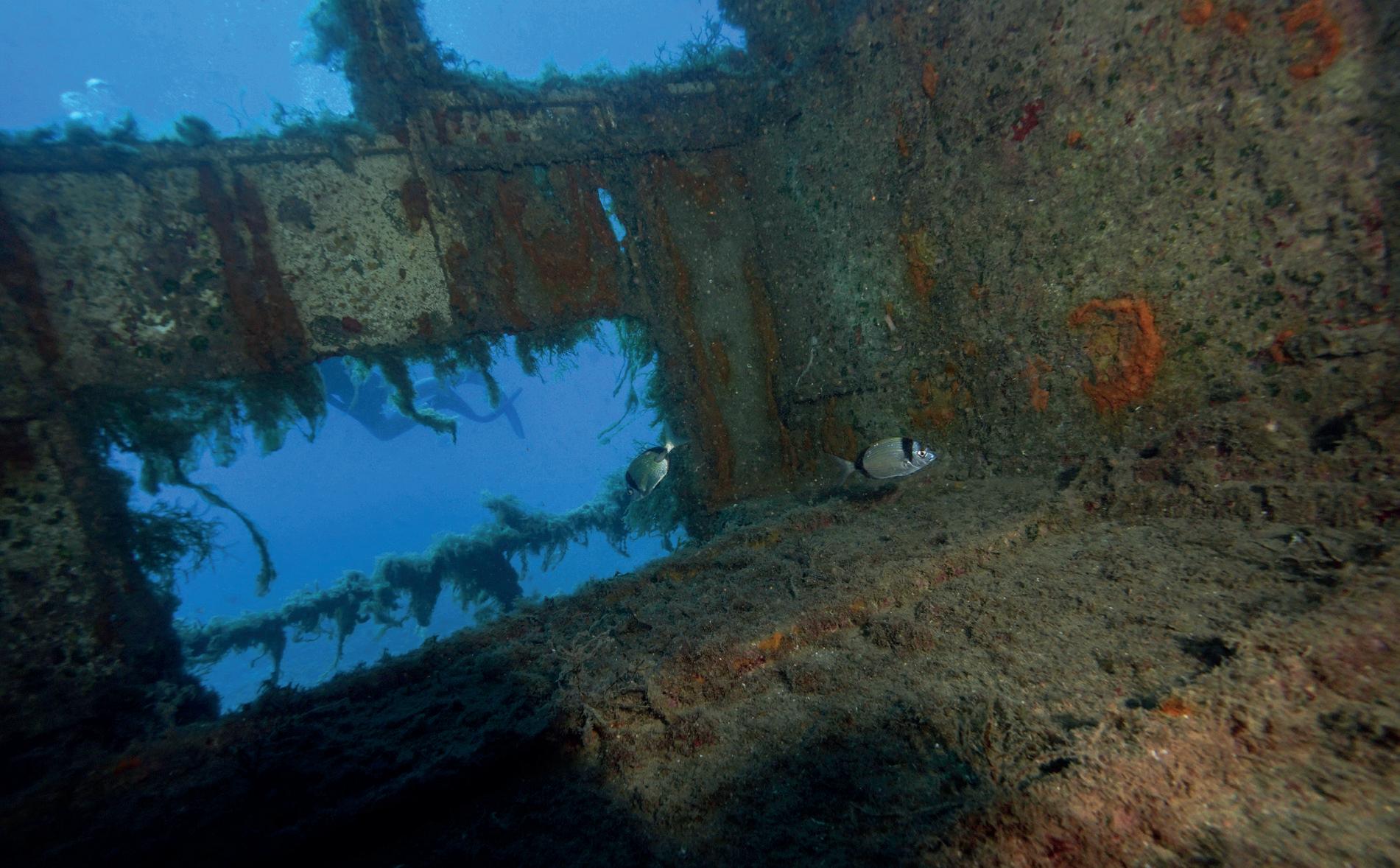


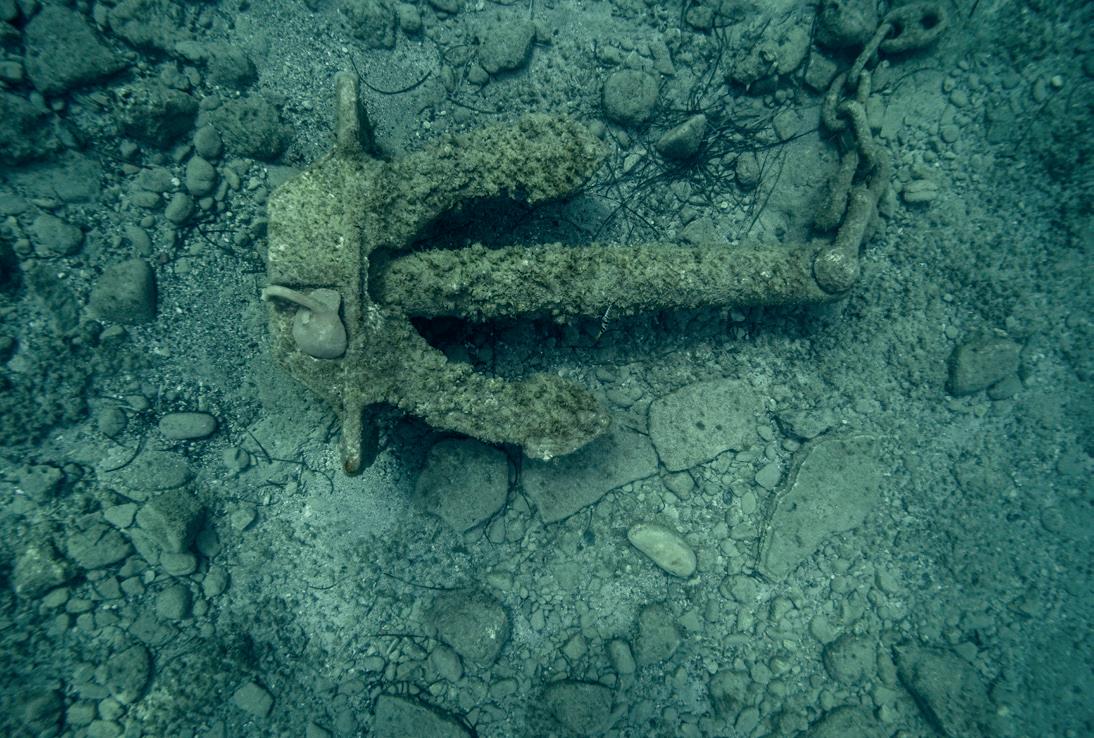
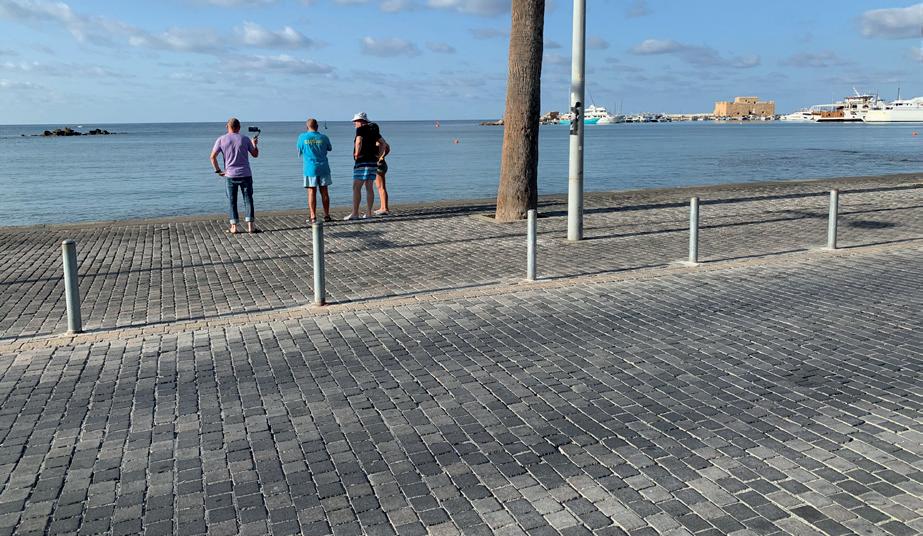

A place where we enter the water almost directly from the streets of Paphos. We dive from a shore near the Roman Port... The underwater wall was built over 2000 years ago as a type of a breakwater. It consisted of two parallel walls. Nowadays, under the effect of the weather conditions and seabed structure changes, one of the walls is completely submerged underwater and the other one just slightly protrudes above it. Over hundreds of years, the entire structure has turned into an artificial reef. At first, it may seem to be just a bunch of rocks lying around, but when you swim over it, you can outright see that the shape of this structure proves it is a work of men rather than nature. A great place for chillout diving. The depth practically does not exceed 6 m. There are actually two walls here, with anchors and animals in between. Octopuses and bristle worms hide under the rocks, while smaller shoals of common two-banded seabreams swim between the stones. Small scorpionfish, single groupers and cornetfish can also be seen here. Inquisitive divers will also find a cannonball made of stone.
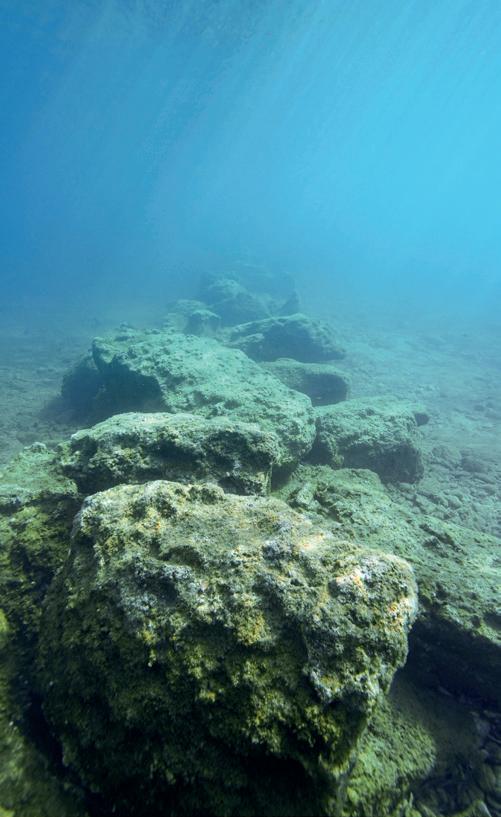
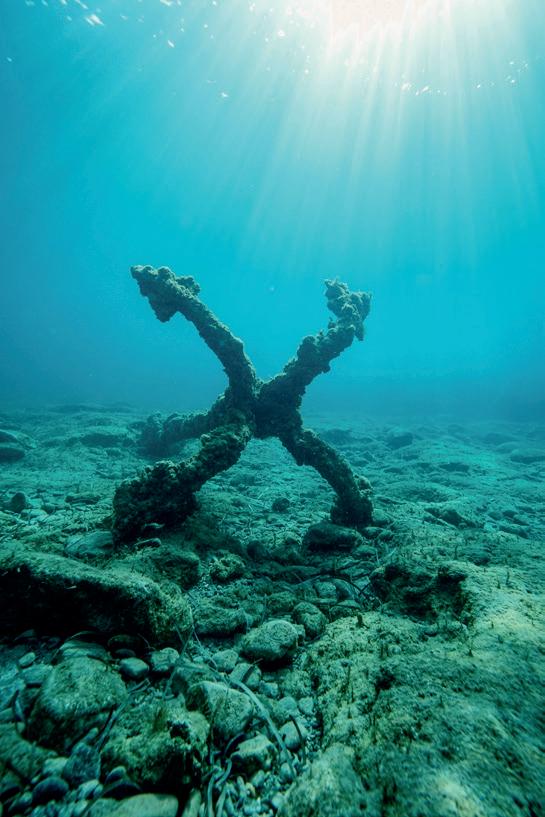
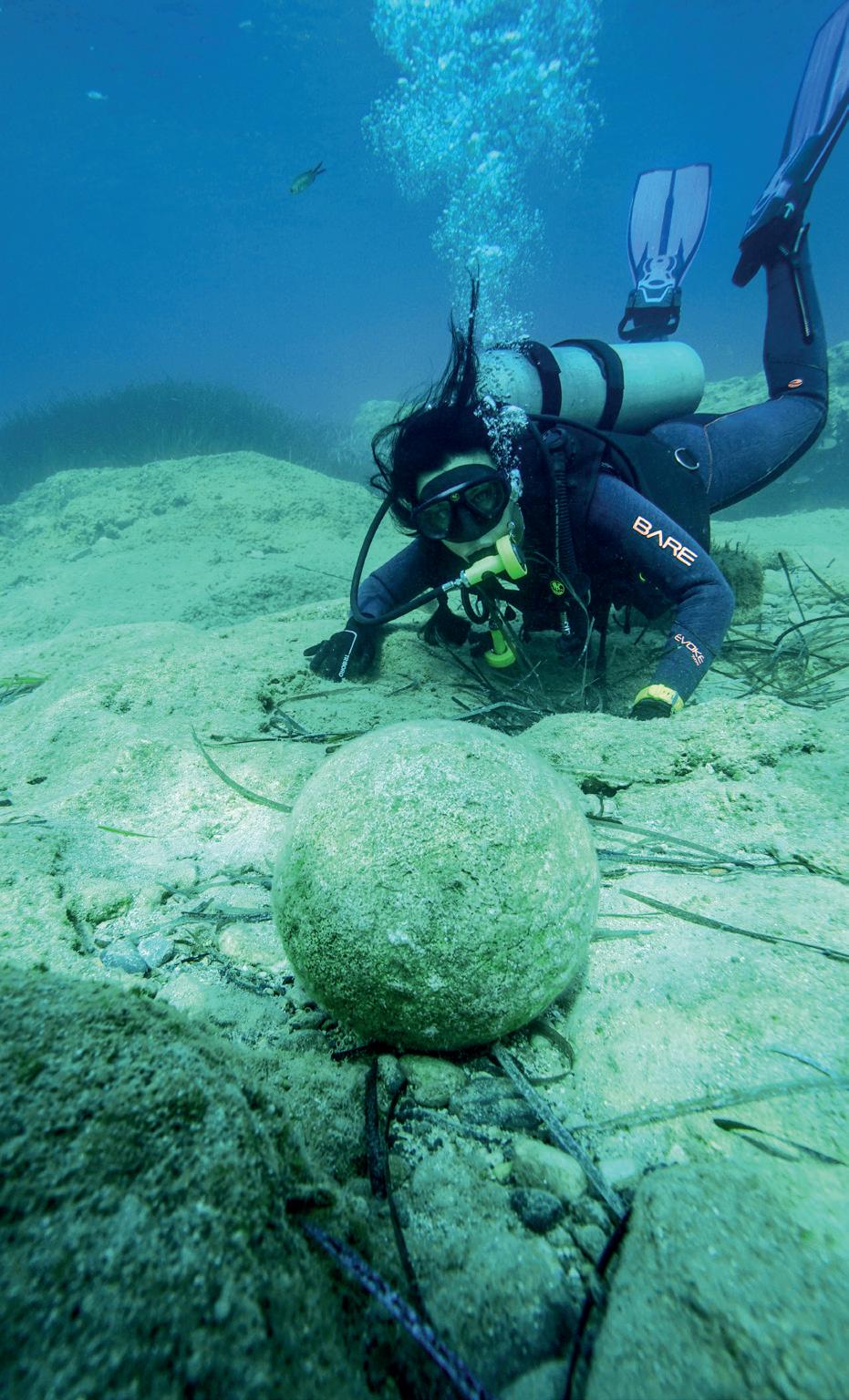
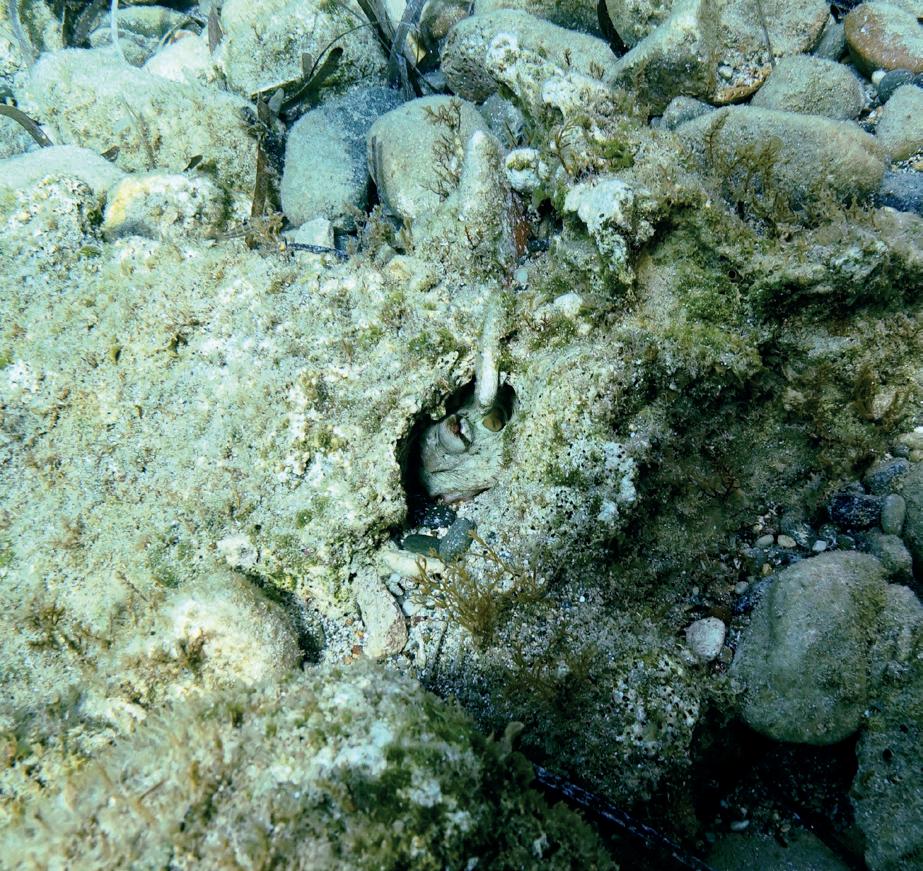
*For freedivers and divers of any level.
North from Paphos, near Pegeia, there is a ship that crashed and was stranded on the nearby rocks during a storm in 2011. Diving has been allowed here recently. A large portion of sheet metal has been cut out in the starboard from the side of the sea. The interior holds intact forklifts and cargo from the deck. The propellers are also intact. Snorkeling is also allowed around the wreck. EDRO III is 95 m long and 14.5 m wide. When swimming and diving around it, you can see fish shoals reaching several hundred specimens, glittering while racing each other.
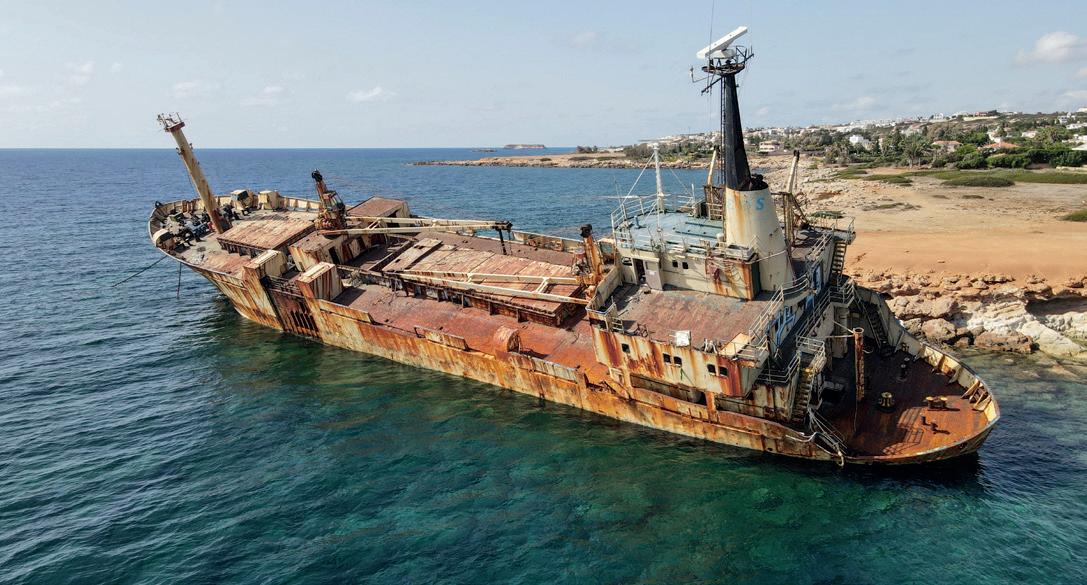
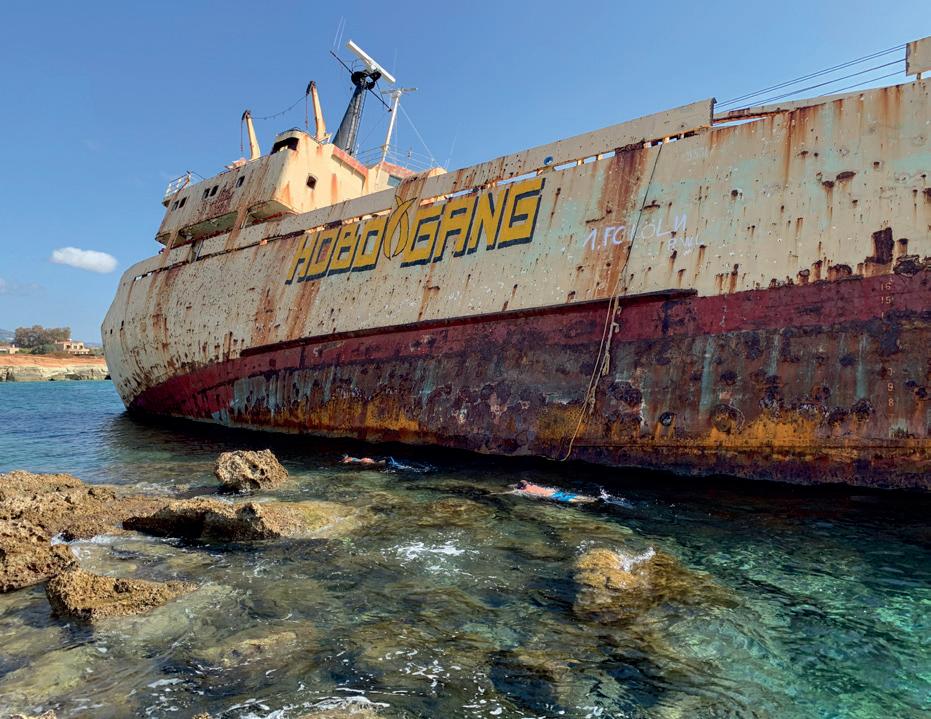

*For advanced and technical divers (strong currents may occur), bring a torch.
Stopping at Pissouri Bay is well worth the trouble, as it offers the Columbia Beach Resort with a charming atmosphere. This place is located far from large cities, on a rock and sandy beach with several bars and water equipment rental shops. Divers can drive almost directly to the beach and find a well-maintained public toilet with showers nearby, 50 m from the parking lot.
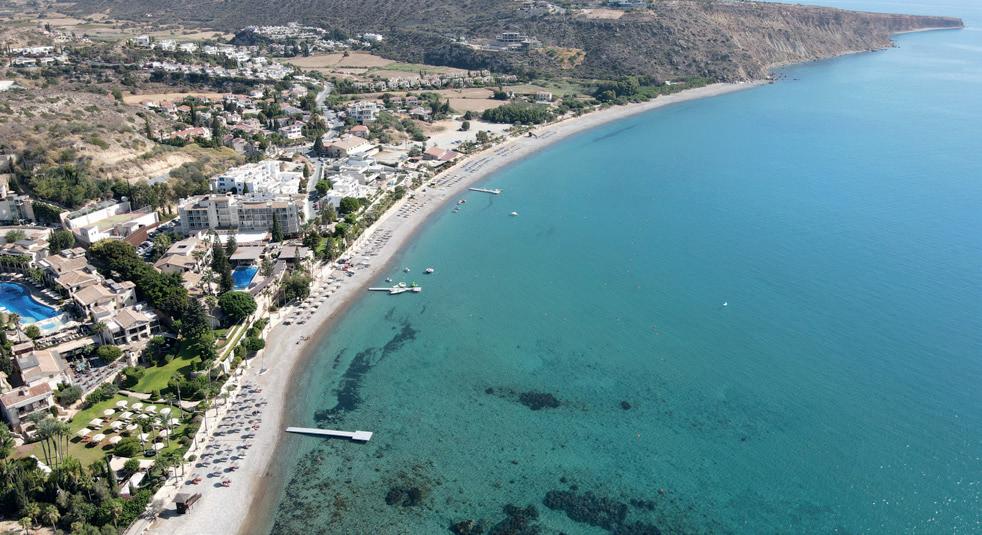
One of the more interesting diving spots of Cyprus is located here – Jubilee Shoals. You can unload your equipment at the beach, right next to the shoreline. We put on our wetsuits and get on the boat that takes us to the diving spot. We moor to a rope tightly tied to a rock 16 meters below. The visibility is from 15 to 40 m. You can usually see the sea bottom under the boat. Diving consists in going to the bottom using the rope (approximately 16 m deep), swimming beyond the rock ledge and performing the plan for the day – diving in the cavern located between the depths of 33 m and 38 m and overgrown with colorful animals and plants. If there is a current, you can stop here be-
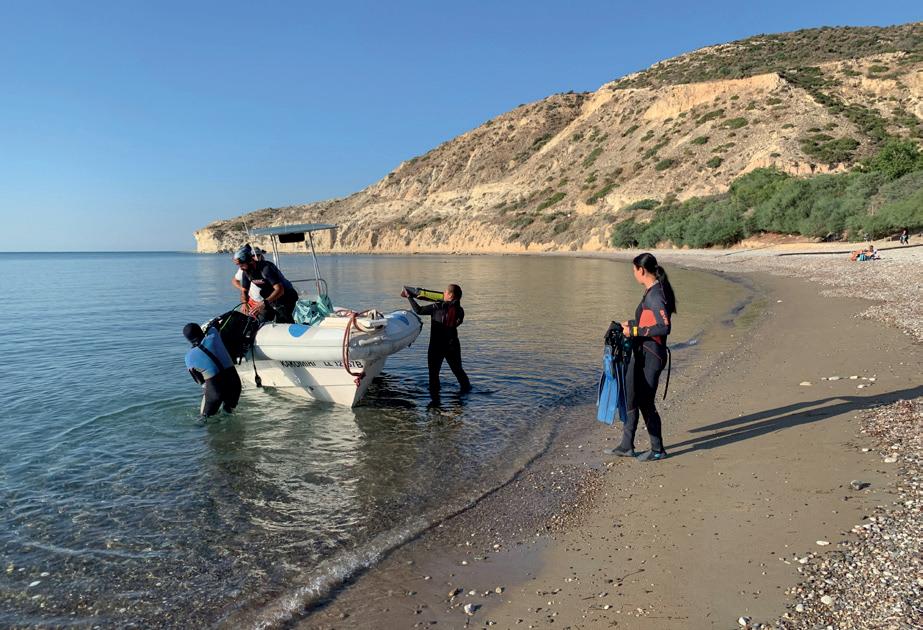
tween the rocks and the guide has to check what the situation in the the part below the rock ledge looks like. It is the best to descend quickly into the grotto. It is large and can easily hold several divers at the same time. Remember about your torches. As we swim out and begin ascending to the surface, we explore a wall overgrown with sponges, sea anemones and tunicates. You can find slugs, bristle worms, spiny lobsters, moray eels and scorpionfish here. Fish typical for the Mediterranean Sea swim nearby and lionfish can be seen in the rocky passages. Turtles, which can be found here, are an interesting novelty.
We get back onto the boat using the downline. The safety stop also takes place near the line and, if the visibility is good, you can still admire this interestingly shaped place and gaze at the turtles swimming majestically and calmly 20 meters away (provided that your lucky enough to meet them here).
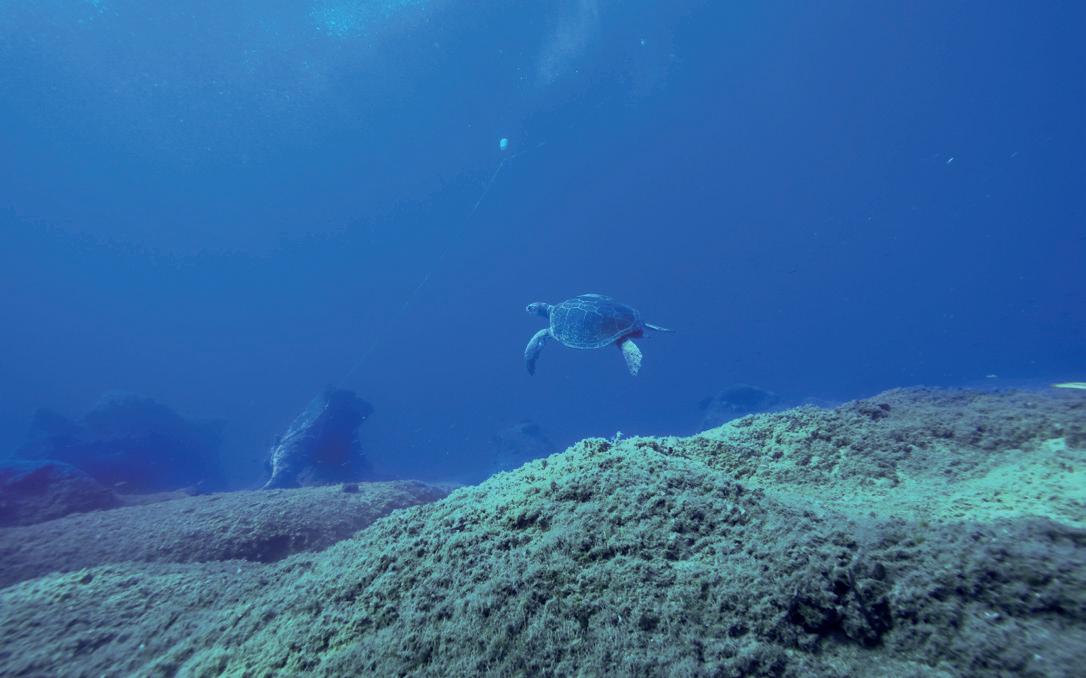



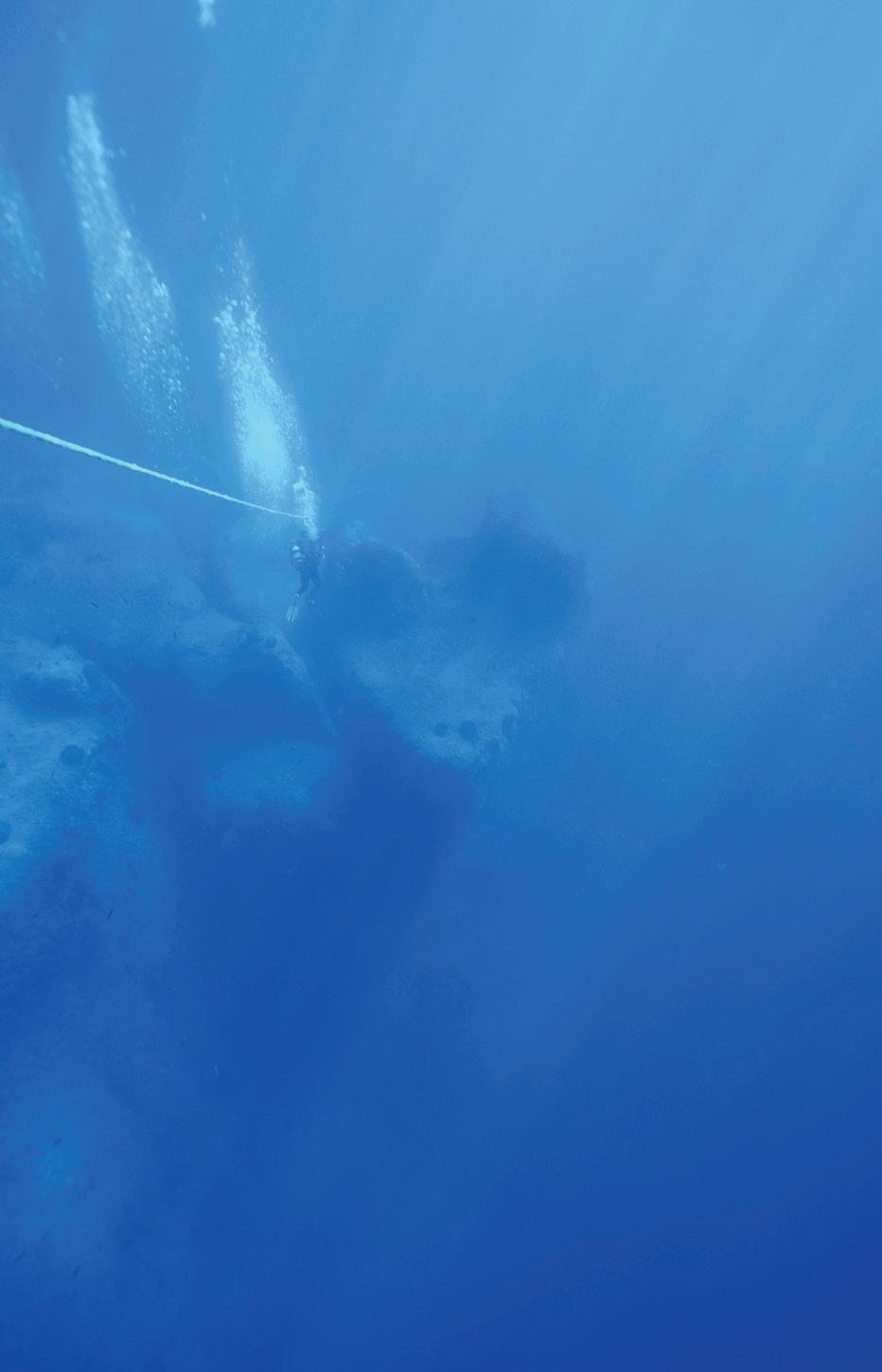

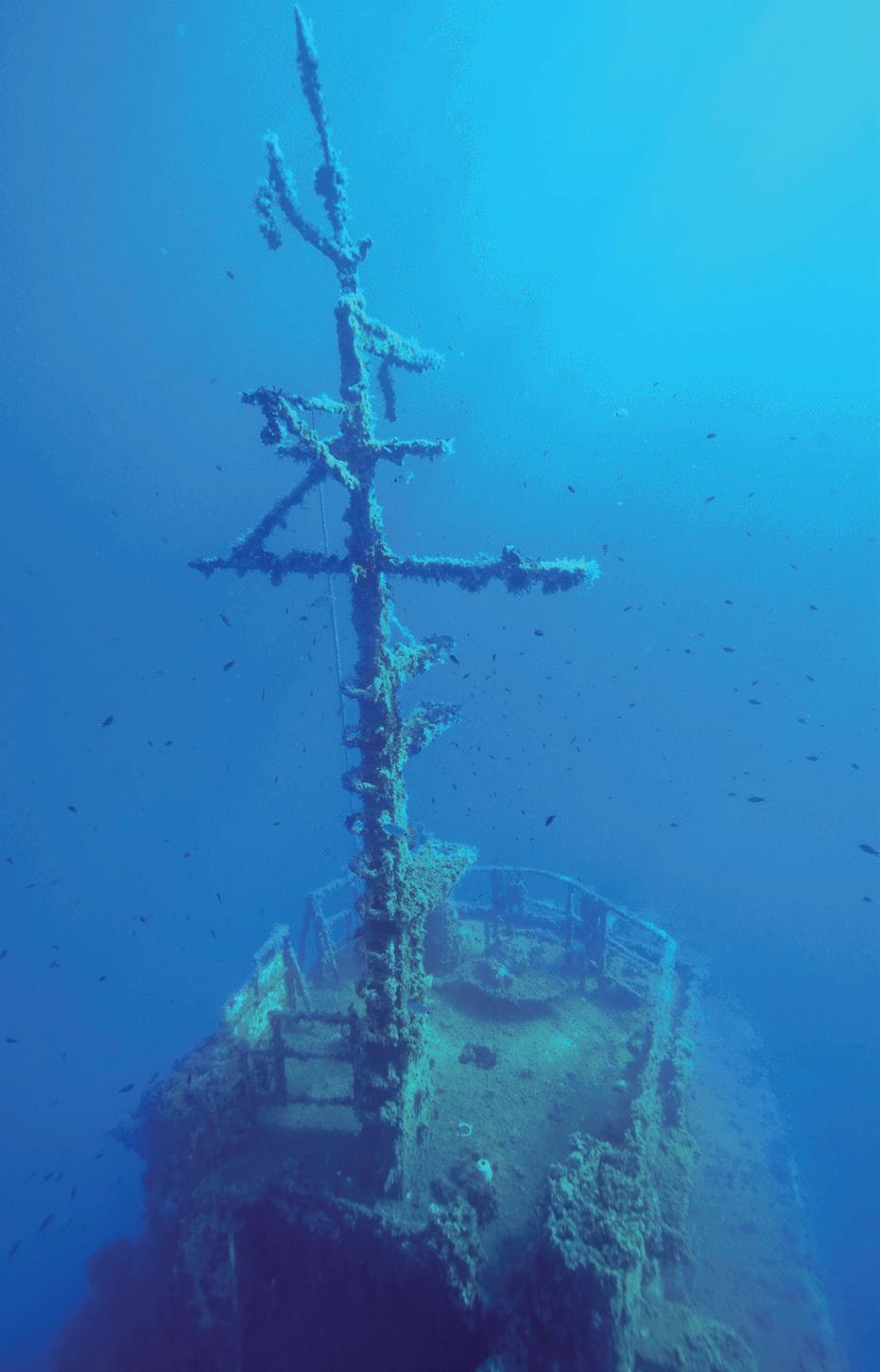
*For advanced divers, bring a torch.
Located at a depth of 25 m, it was build by the Soviet Union in 1989. It sailed the waters around Cyprus from 1997 until 2014, when it was sunk. It rests 1 km away from the Limassol coast, in the Dasoudi Marine Protected Area. The wreck lies on its keel on a sandy bottom. It is 25 m long. It has become an artificial reef inhabited by numerous marine animal species, including, for example, Zengoliath giant groupers, groupers, striped red mullets, many small fishes and nudibranchs. Turtles can also be seen here on occasion.


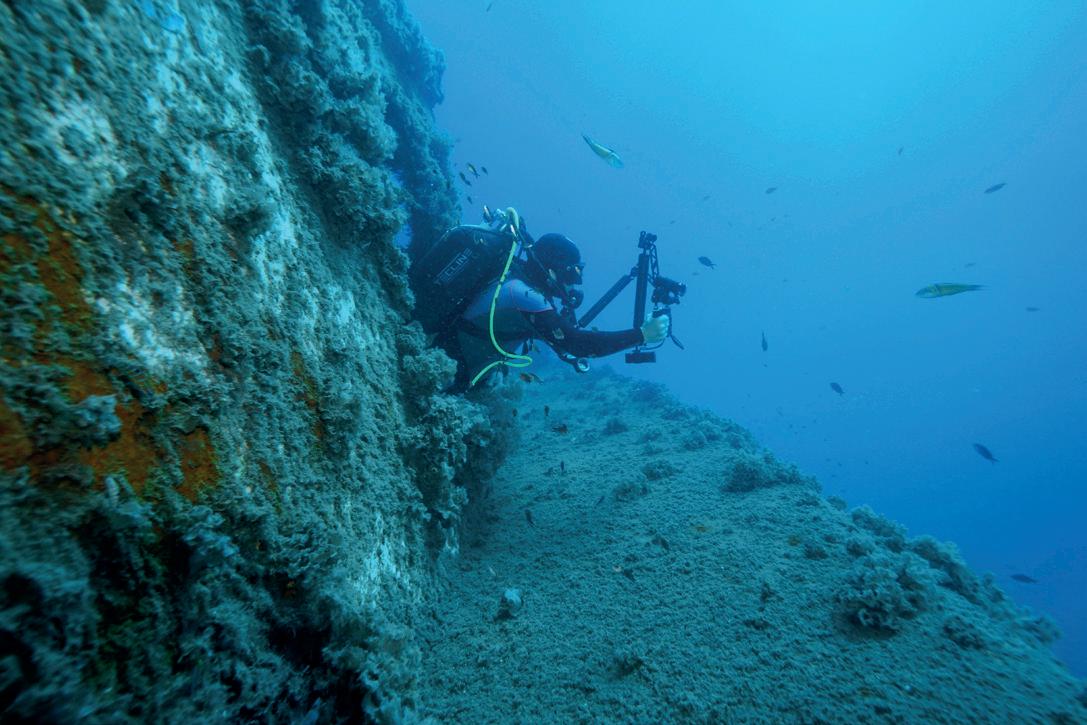
since 2022)
*For divers at any certification level.


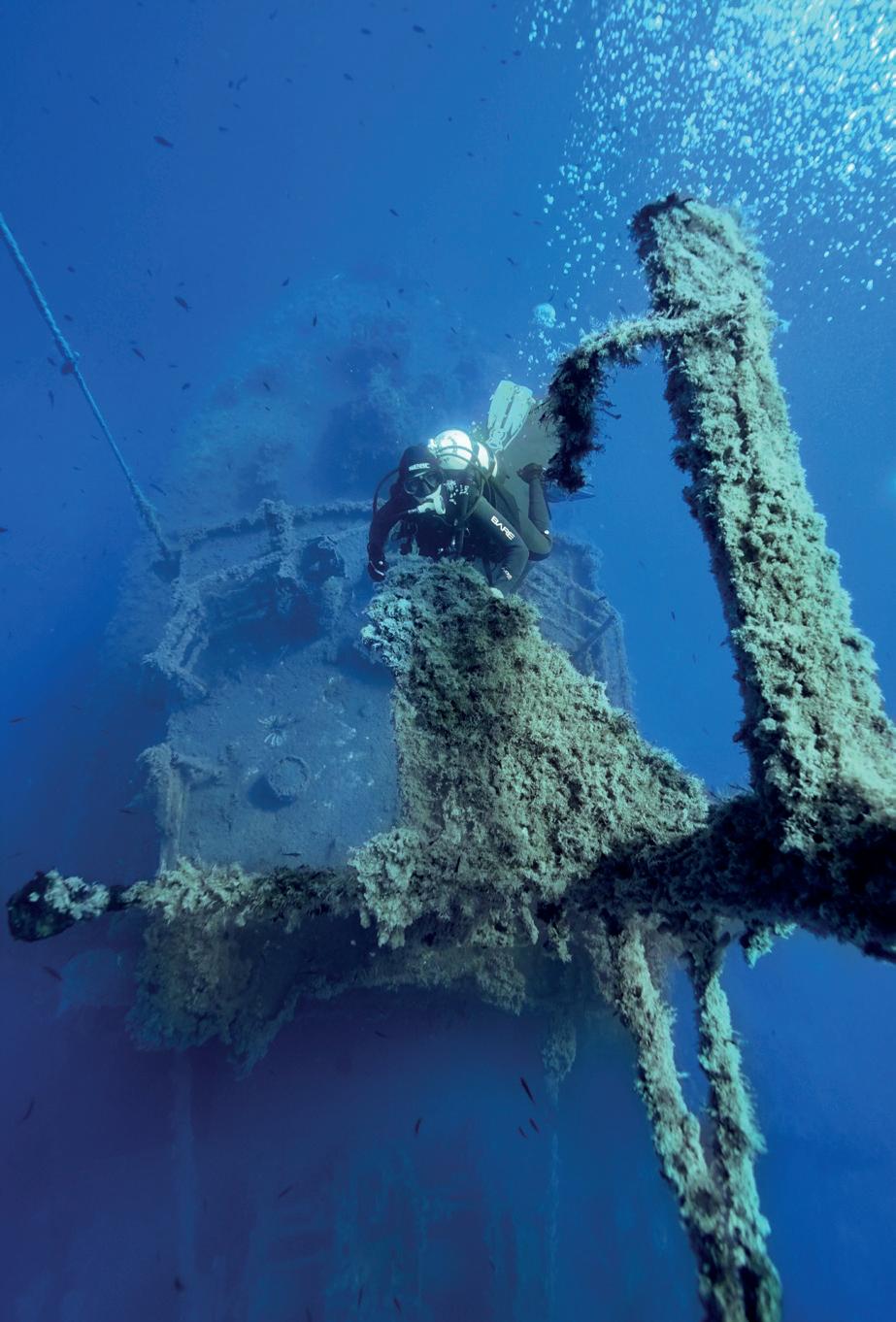

Opinions on this place vary. Some consider diving here to be a waste of time. A local artist has made masks out of concrete that have properties and pH that are friendly for flora and fauna. Hitting the bottom with your fins easily causes clouds of sediments to rise, which sometimes makes it dif-



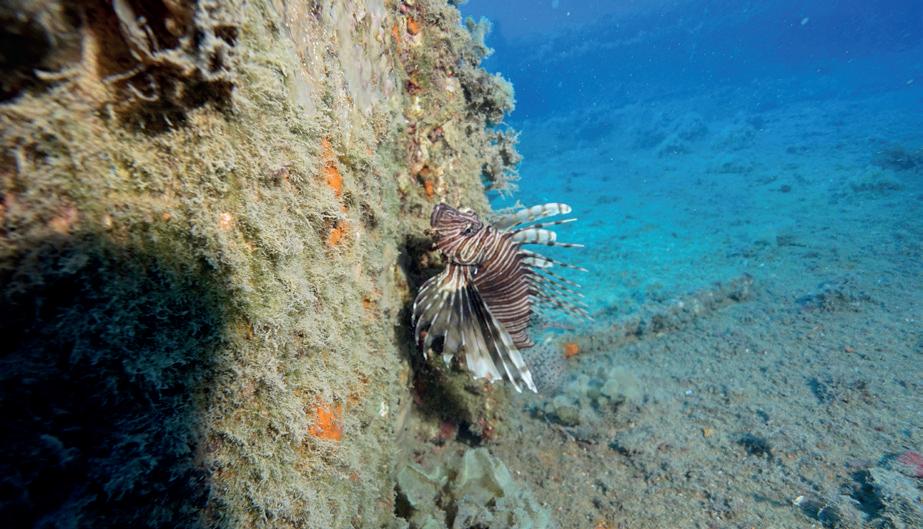
ficult to find the masks. They are located at a depth of 17 m, amongst some rocks. These are theatrical masks. One of them has a smile, the other has a sad expression. You can sit in their open mouths. Emotions accompanying this dive can refer to our lives. People often wear masks and I do not mean facemasks work during the pandemic, but those which are worn to hide true emotions, not to show that we really care for something and to play your role well in the theater of life, meetings and opinions.
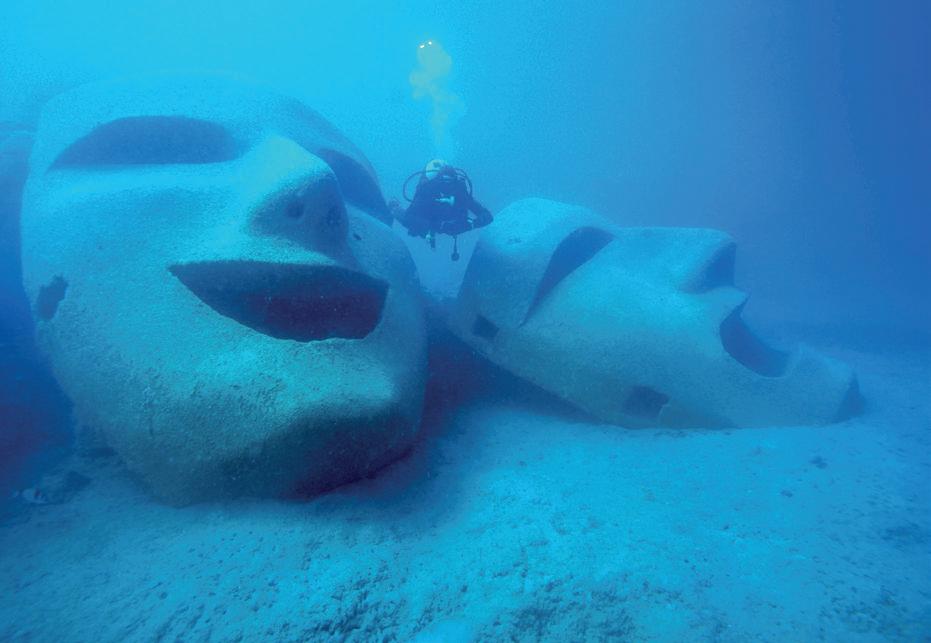
*For divers at any certification level, bring a torch.

Lady Thetis sank in 2014 in a marine park – a protected area, 1 km from a city coast. It was a passenger cruise vessel. It lies on its keel on a sandy bottom at a depth of 18 m, measuring 30 m in length. You swim around the ship wreck, take a look inside and see a lot of marine life. Inside you can find plenty of lionfish, which are present in masses at the diving spots of Cyprus nowadays. Crowned squirrelfish (sargocentron diadema) in small shoals can be seen here. At the top of the wreck, you can witness how amberjacks hunt, plunging in turns into a shoal of smaller fish. Bottlenose dolphins can also be seen here on occasion.
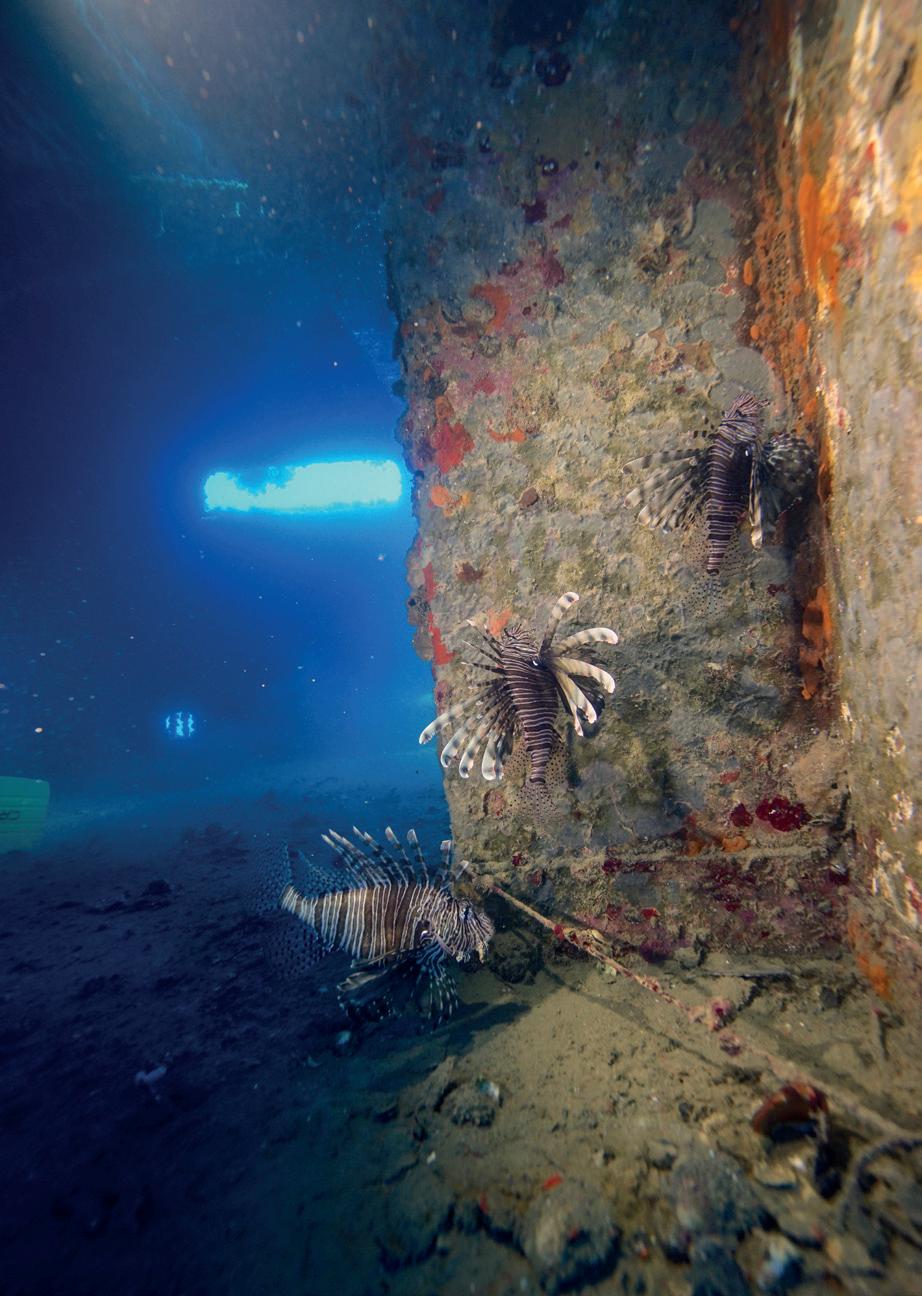
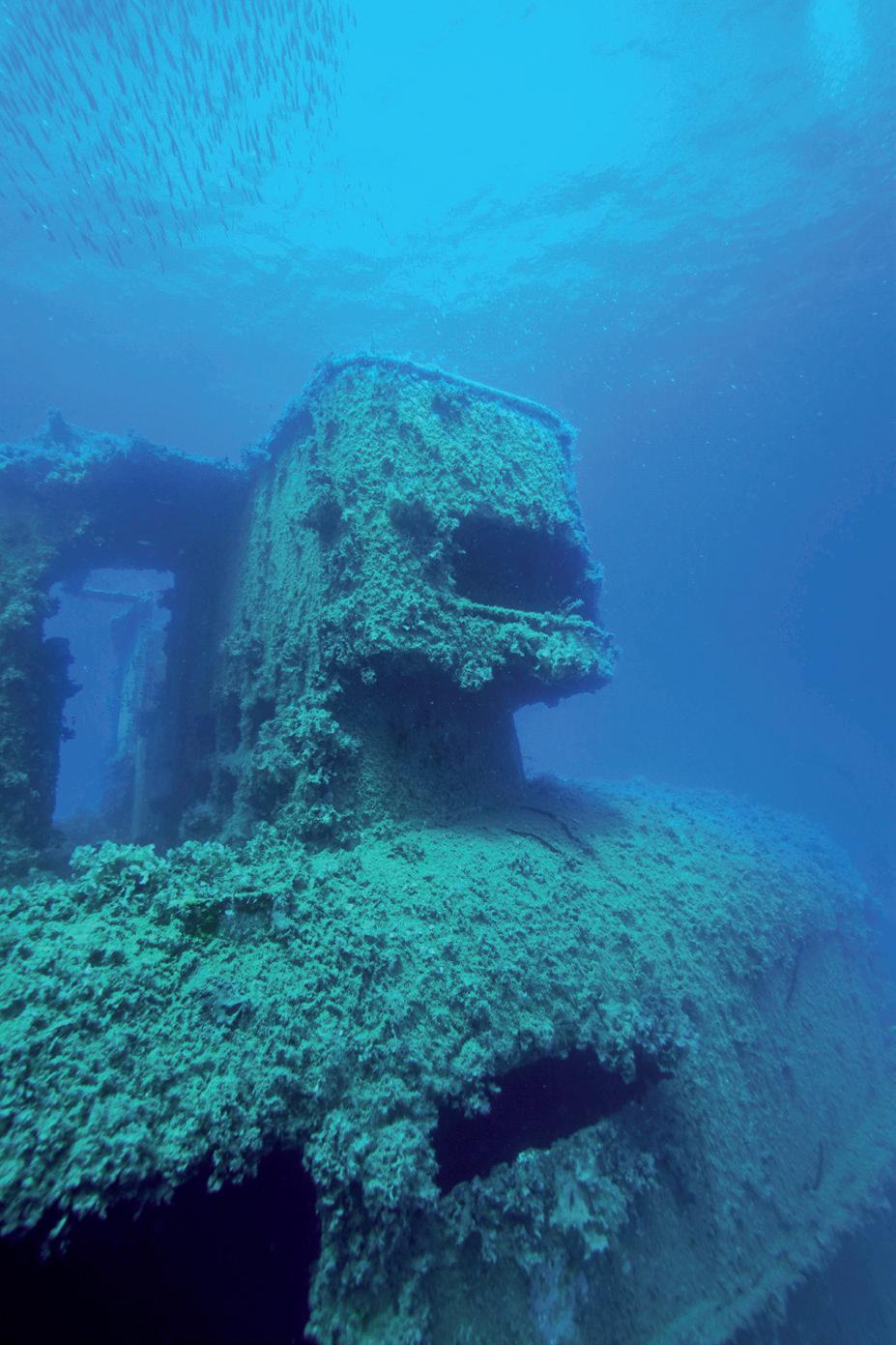


*For freedivers and divers at any certification level.


In the area of Limassol, there is one more spot that allows for a chillout dive from the shore – an ancient underwater port. The submersion depth does not exceed 5 m. When the sea is calm, you can lose yourself while examining the ancient stones, searching for octopuses and bristle worms, as well as watching the schools of small barracudas swimming by. A total chill. You can say that it’s nothing special, but diving amongst the ancient stones and fragments of what was probably amphoras stimulates the imagination. When you get out of the water, you can cross the street to look at the onshore part of the port.

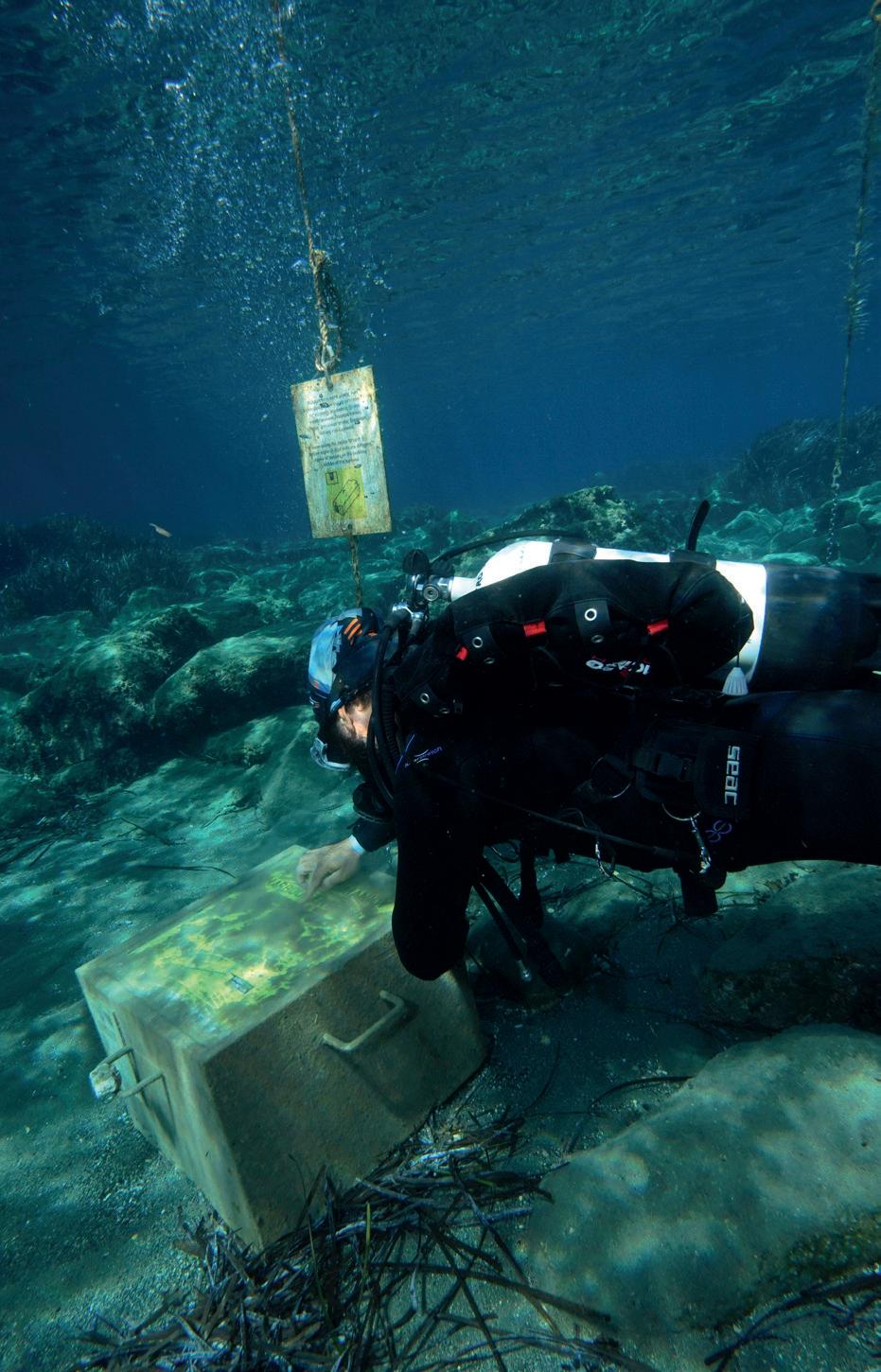
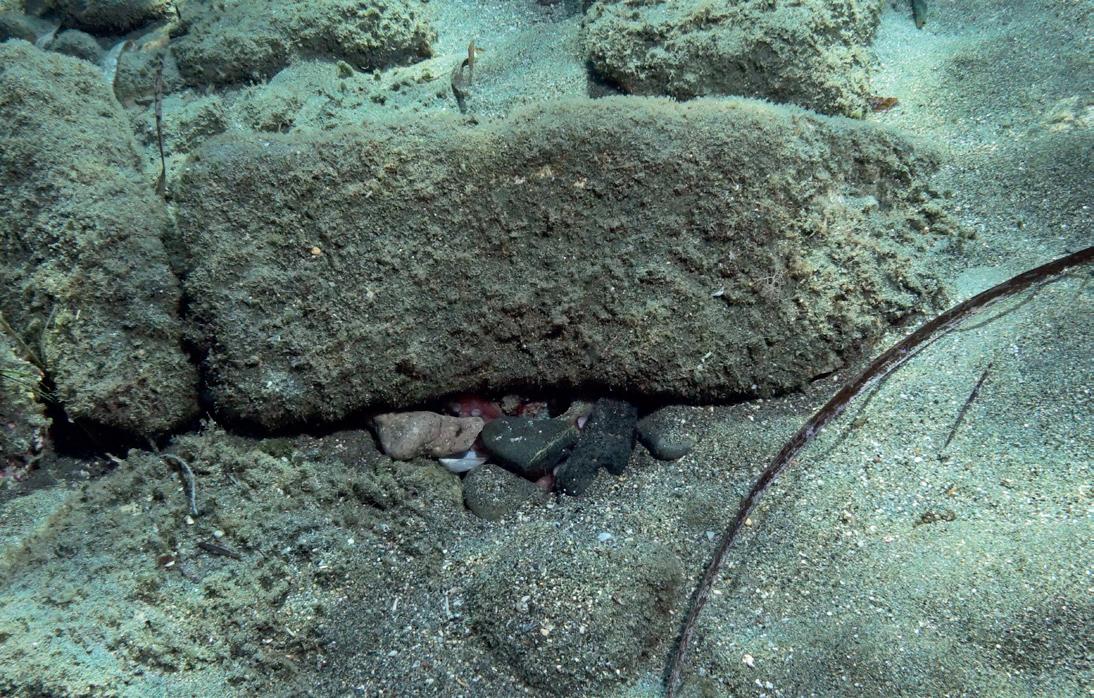


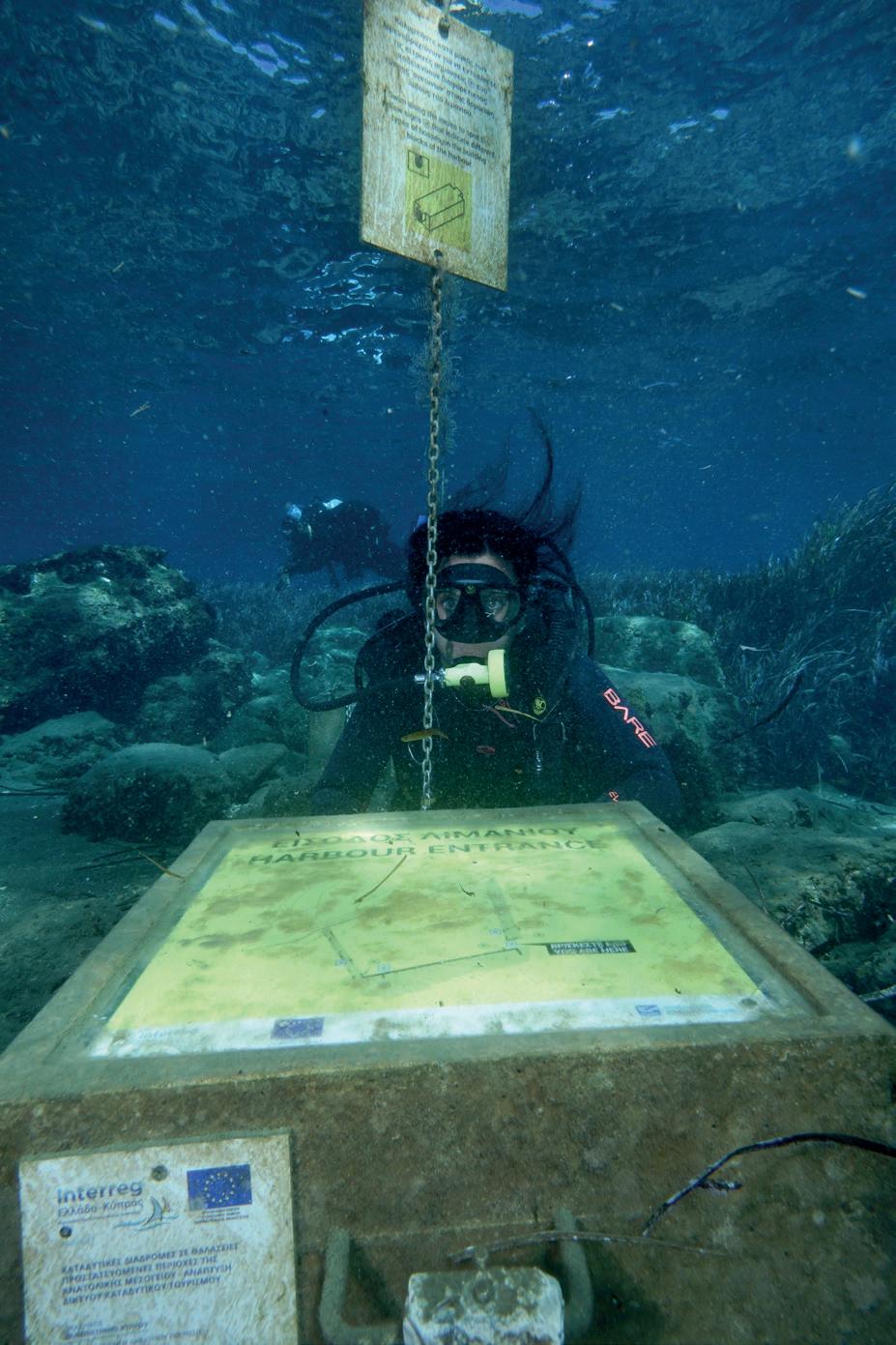

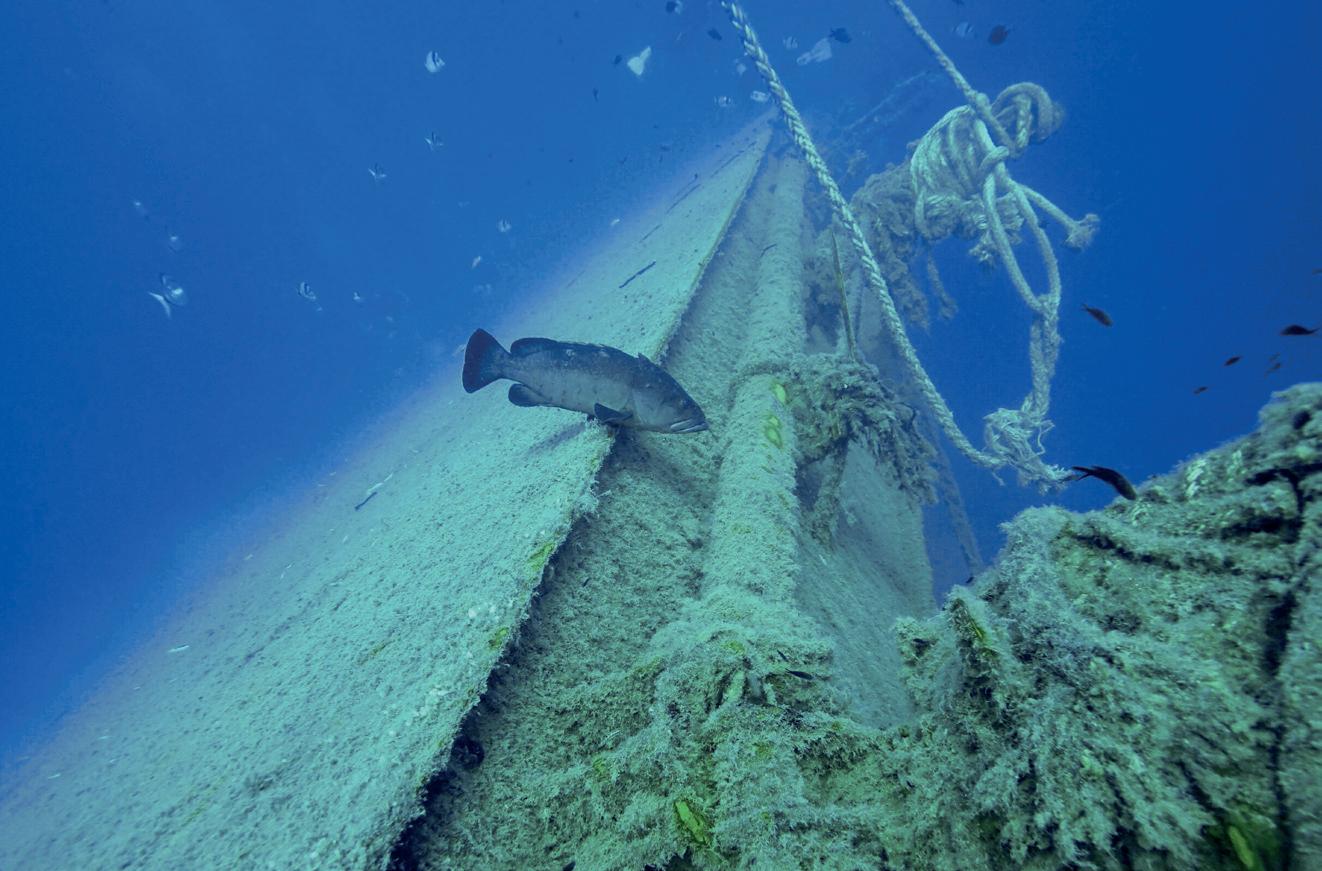
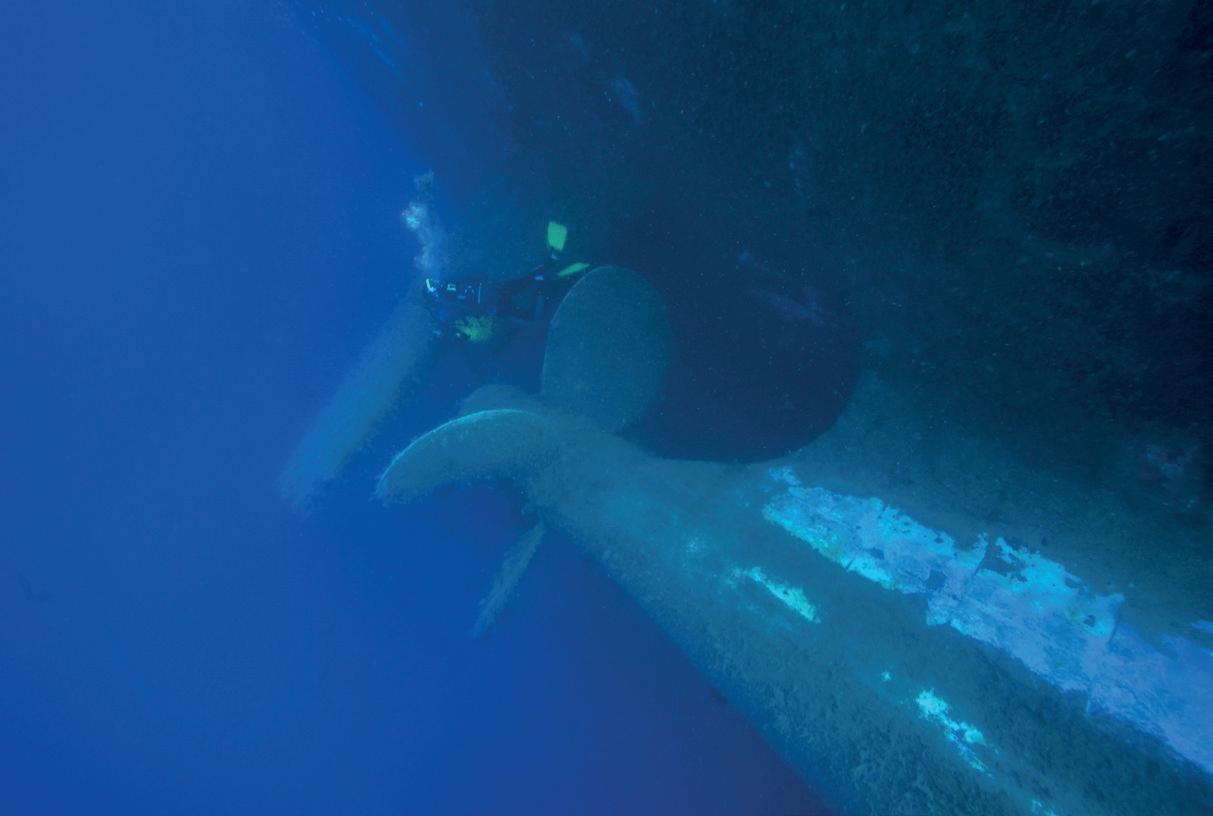
*For freedivers, as well as advanced and technical divers, bring a torch.
This is one of the most well-known and the most frequently visited wrecks in the world. No wonder, as it is a real treat for divers and freedivers. The ship was built in 1979 in Sweden. It is 172 m long and 26 m wide. In the first half of 1980, it embarked on its virgin cruise from Malmö to Tartus in Syria. It carried a cargo. It reached the Mediterranean Sea, having its first stop on Crete and the second one in Athens. When it was sailing between Crete and the capitol city of Greece, the captain found a problem. It con-
cerned an excess of water, which was erroneously pumped over to the side ballast tanks. The ship continued its cruise and entered the Cyprus waters in the area of Larnaca. It was 2 June 1980. The problem with pumping over the water could not be fixed and the ship was directed to move 1.5 miles away from the port, where it anchored. The problem was found to be a software error. At this time, during the course of just a few days, Zenobia started to tilt to the port dangerously. The captain decided to evacuate the crew. Only a few days after anchoring, during the night on 7 June 1980, Zenobia went down to the bottom, where it lays in Larnaca Bay. It rests at the depth of 42 meters on a sandy bottom. It lies on its left side.
The wreck starts at a depth of approximately 16 m. You dive twice here and, in order to thoroughly explore the wreck, many decide to dive 4–10 times. To be honest, the wreck is huge and there is a lot to admire and penetrate. Even more so, as over more than 40 years it has become the habitat of countless sea creatures.
You can swim inside and see what Zenobia carried, explore the bridge and the living quarters. Specimens of large moray eels, groupers over 1 m long, lionfish, common two-banded seabreams, saddled seabreams and scorpionfish can be seen here. There are also snails, slugs and shrimps, as well as triggerfish, cornetfish, barracudas and turtles occasionally.


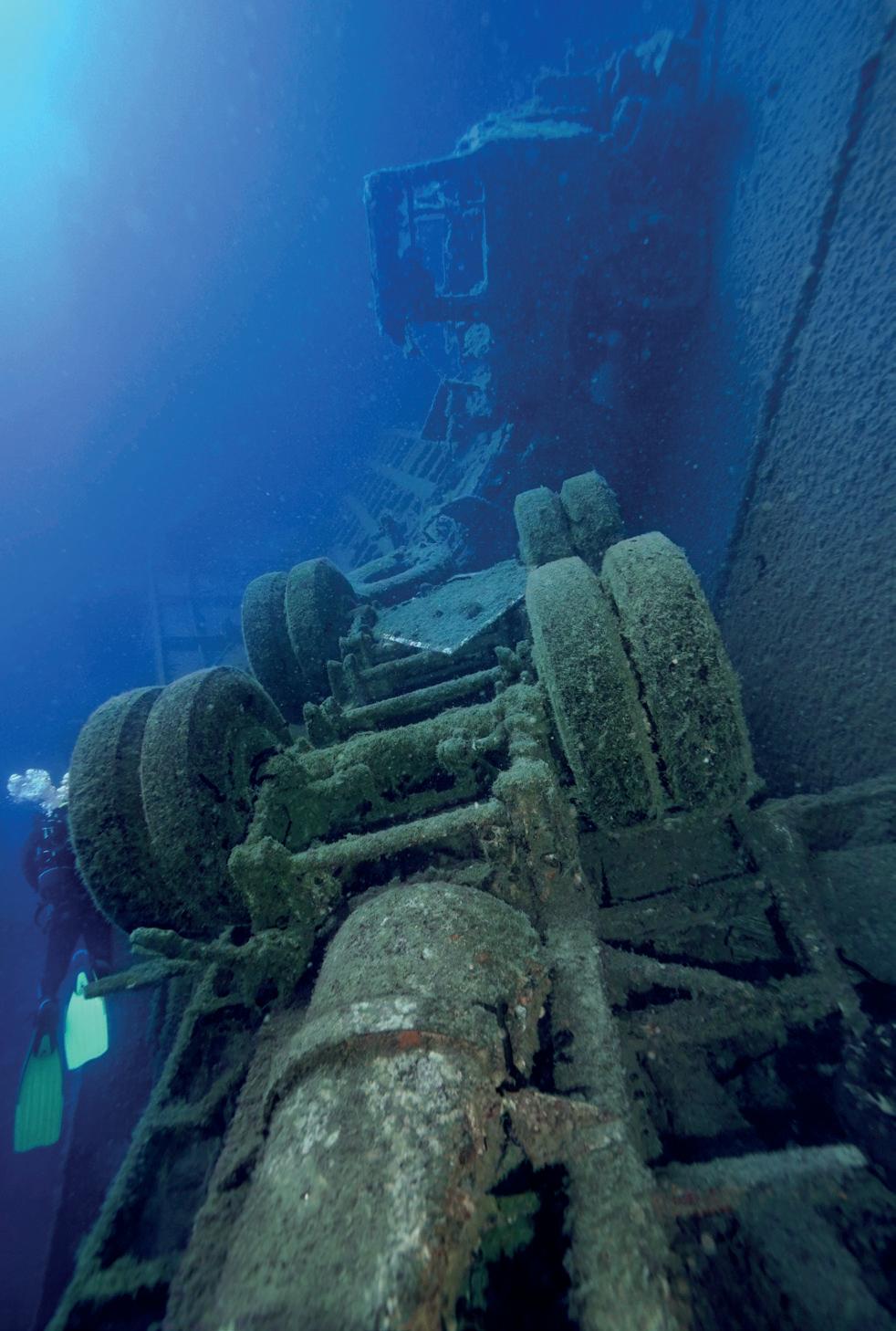

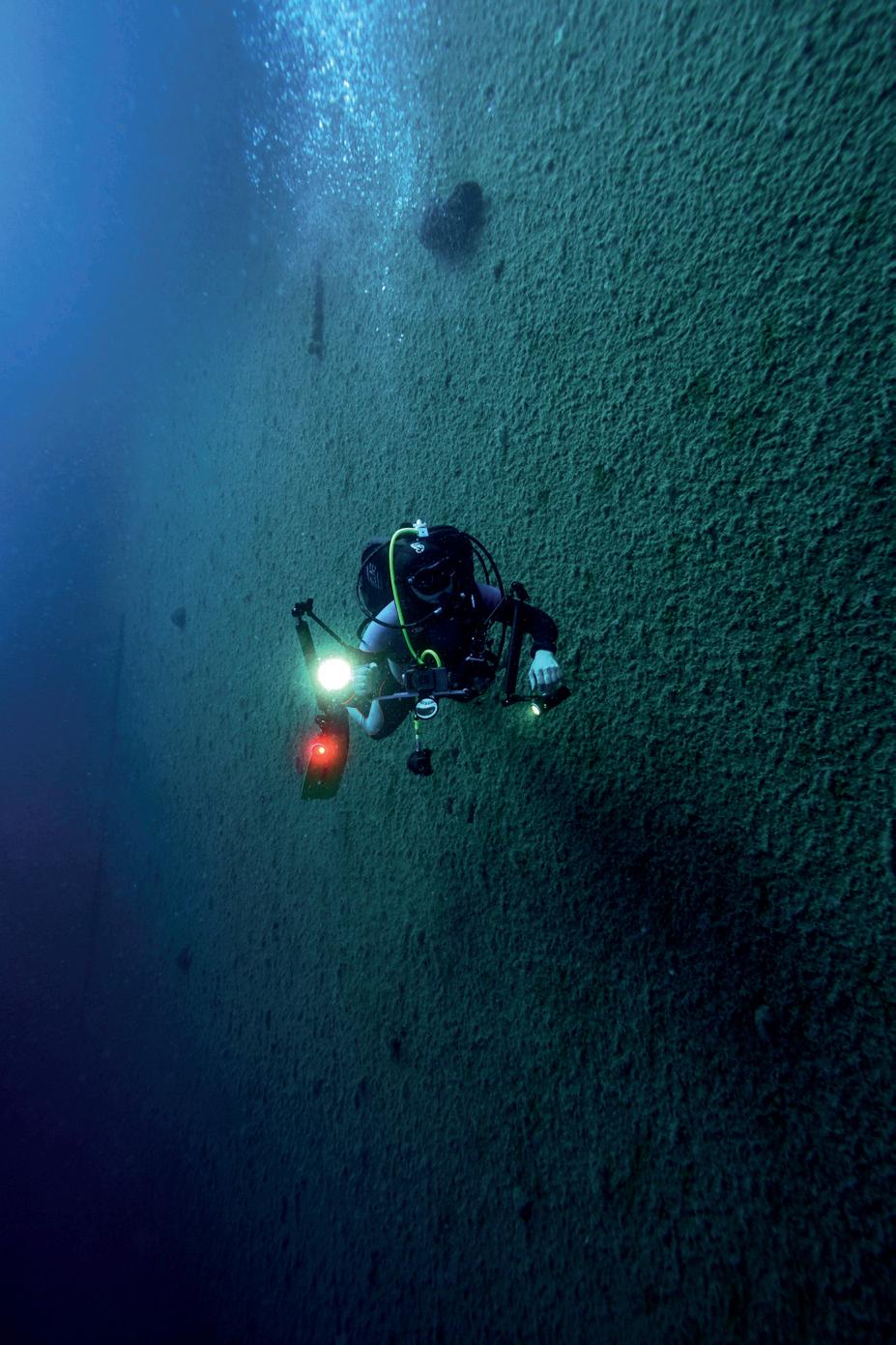

*For freedivers and divers at any certification level.
MUSAN (Museum of Underwater Sculpture Ayia Napa) consists of almost 100 submerged sculptures. This is all thanks to the Mayor of the Ayia Napa municipality, who, in cooperation with the Department of Fisheries and Marine Research, made arrangements with Jason de Caires Taylor, an artist of world-wide renown, who made the sculptures. Here, you can find, for example, an underwater forest, human figures, some of which have bushes instead of heads, and children looking at the world only through a camera lens. The creators hope that the museum will allow to enrich the biodiversity of this area over time. Nature and humans have been the inspiration for these sculptures. They have been made from inert materials with a neutral pH. They do not have any destructive impact on the area and they are already visited by fish shoals.
When diving, we looked at the figures and the way they have been presented, as well as at fish and hermit crabs. There is a woman lying in a fetal position, on her left side, with a plant growing out of her belly. Two other women stand with their backs to each other. There is also a figure of a girl who struggles to carry a happy older man on her back or a figure of a small, crying boy ignored by everybody.
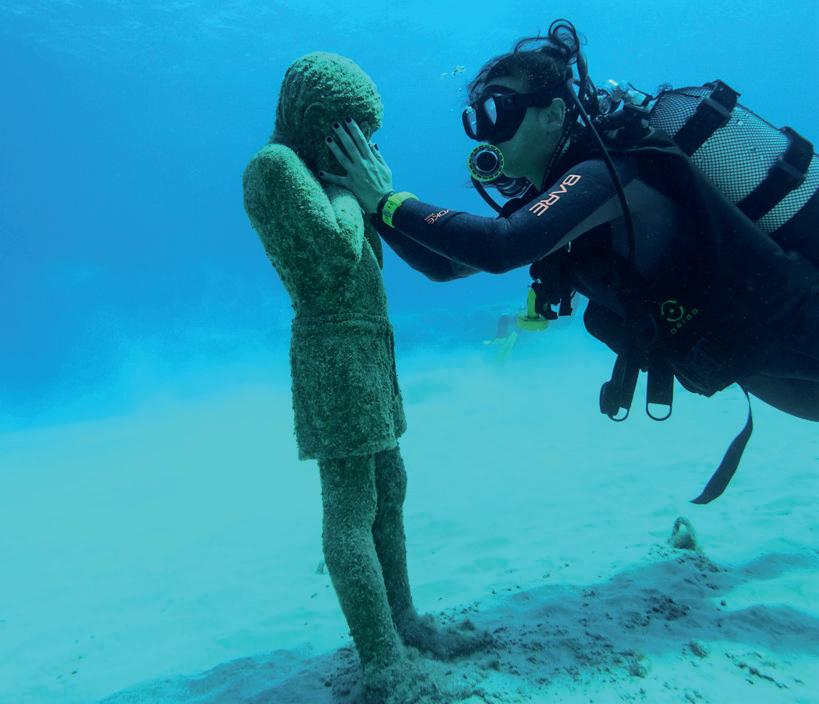
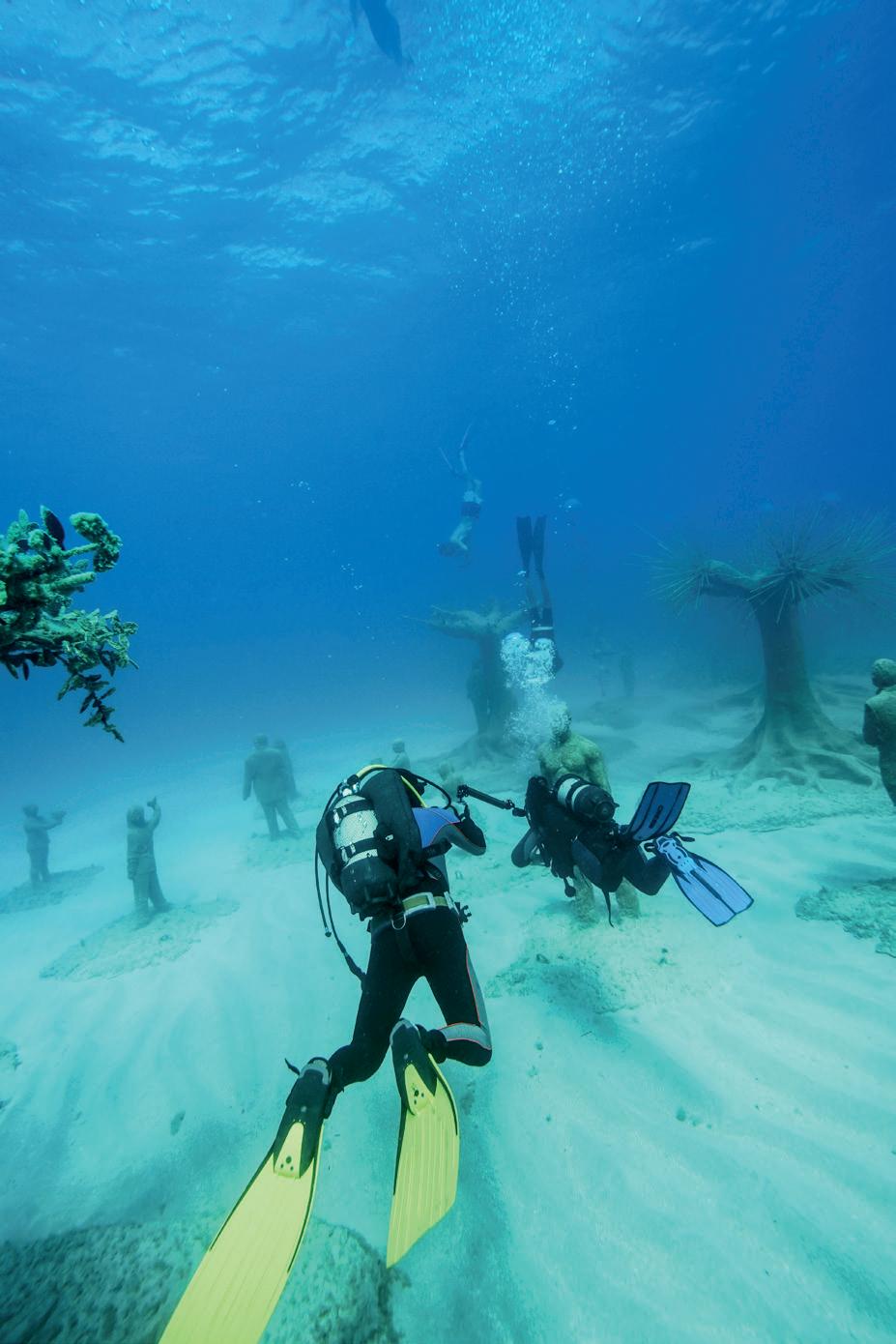
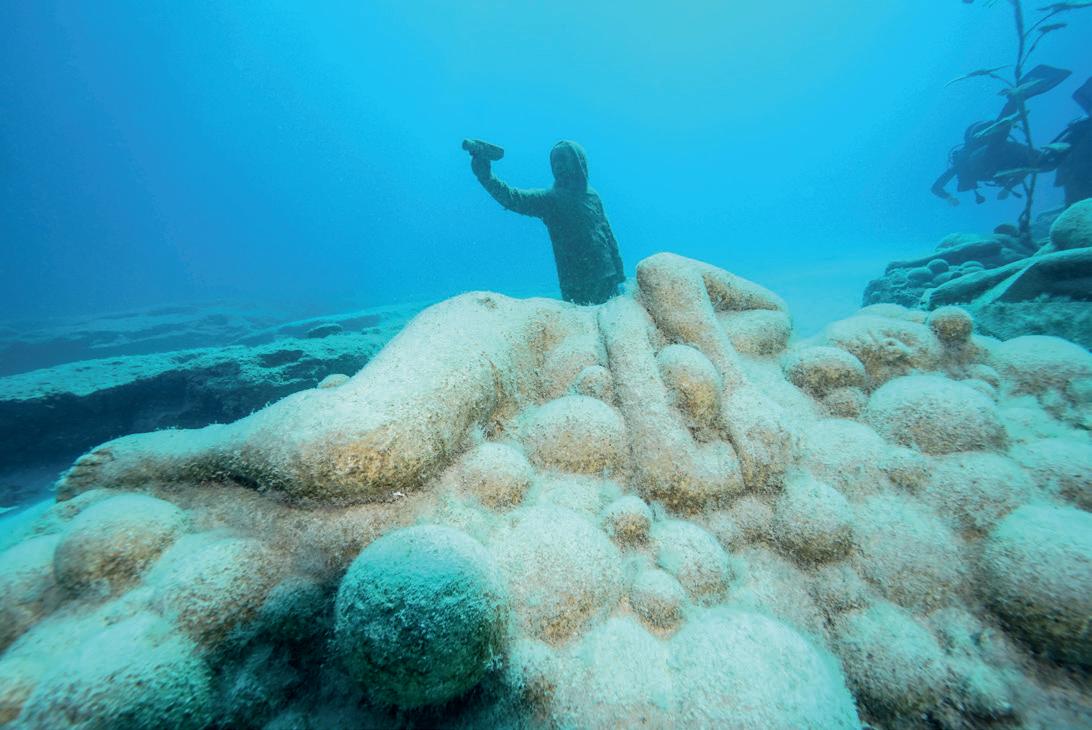
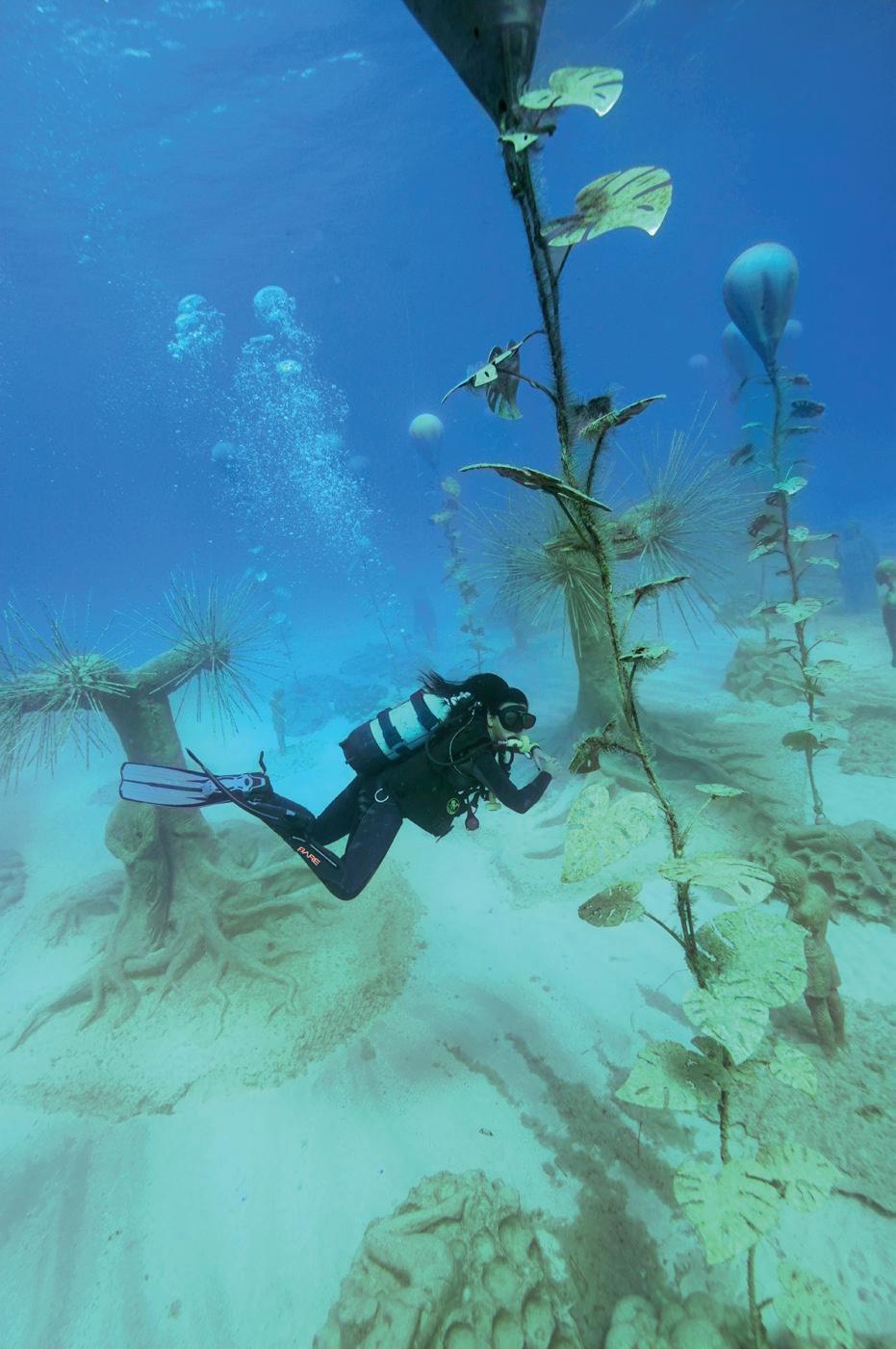
Art is just like that, although an artist has their vision when creating, their work starts to live a life of its own in the end. This happens literally and metaphorically at MUSAN. The underwater exhibition, which slowly becomes a habitat for marine life, is also a story of present-day people presented from the perspective of an anonymous street. Ubiquitous cameras monitoring our lives, mutual invigilation and praying for a better and richer, but virtual, life. When chasing a better life, we forget that we are part of a cycle. Wounded, stripped of our dreams, but constantly with hope for a better tomorrow. MUSAN is the modern world, which attracts with its form. Time runs differently here, somewhat slower, although unavoidable ascent awaits us all in the end. We wish you a pleasant, individual perception of the exhibition proposed by Jason de Caires Taylor.

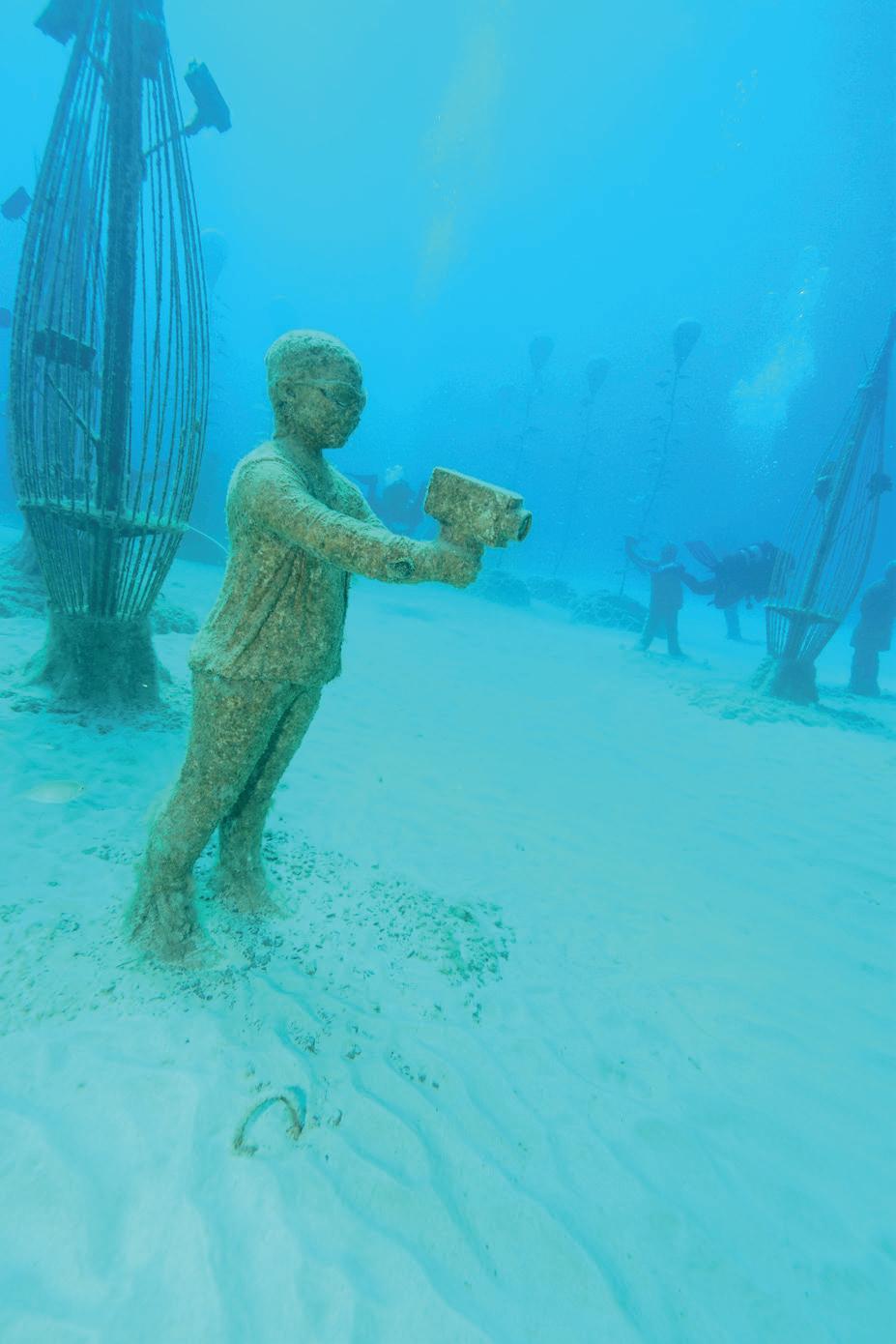




*For divers at any certification level, bring a torch.

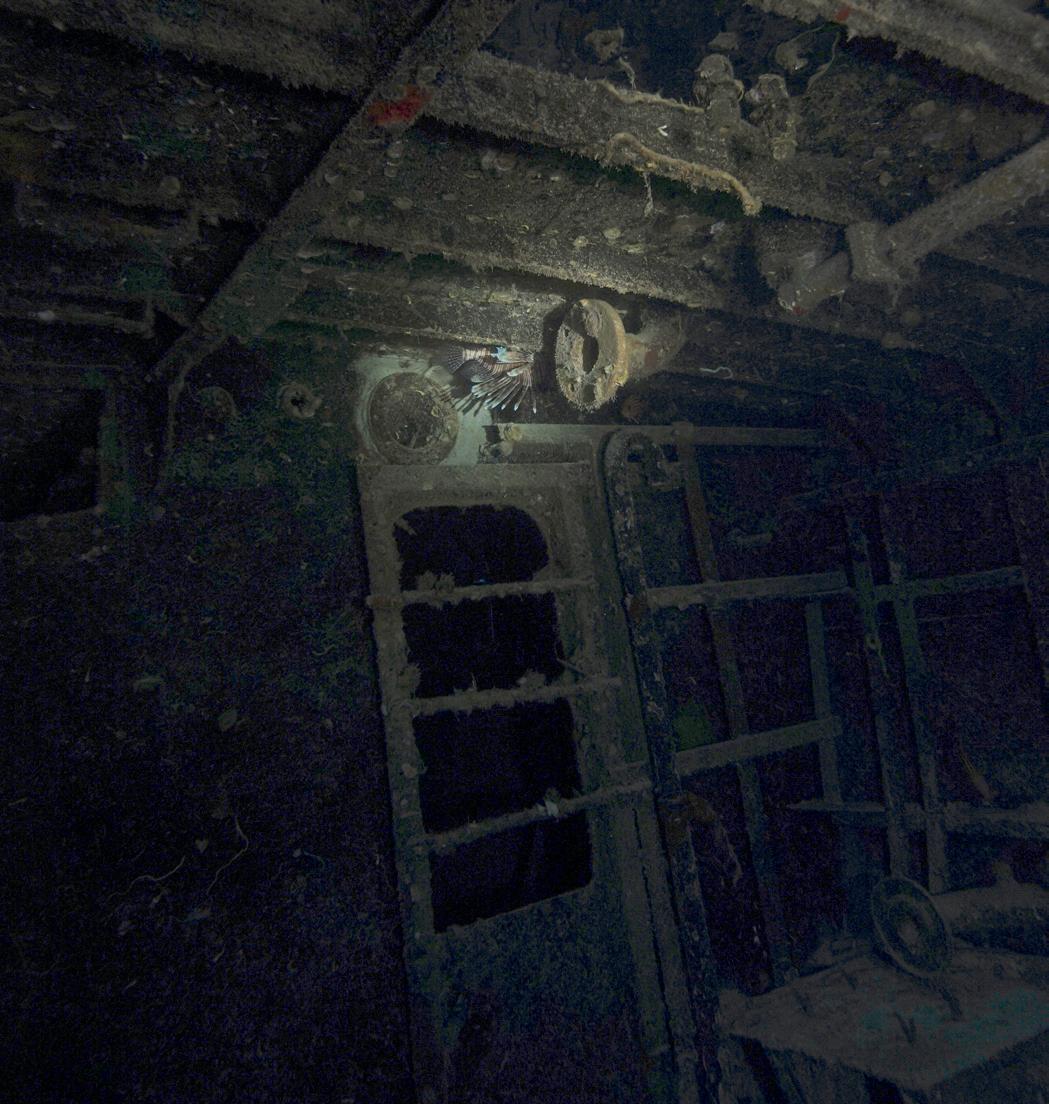
“Knossos” was built by the Hellenic Shipyards and commissioned in November 1978 as a patrol boat for the Greek navy. It was transferred to the Cypriot navy in 2000 and renamed “Kyrenia”. Back then, the patrol boat was armed with a 20 mm Oerlikon Mk 10 anti-aircraft gun and a 2-round anti-aircraft missile launcher.
With a length of 25 m, Kyrenia was qualified for the Cyprus Artificial Reef project. It was sunk in February 2015 in the Ayia Napa region. It rests on its keel on a sandy bottom at the depth of 23/24 m. Visibility is very good here and reaches approx. 25 m, which often makes the wreck visible in its entirety. Each year it gets more overgrown with sea life, becoming a shelter and habitat for many creatures.
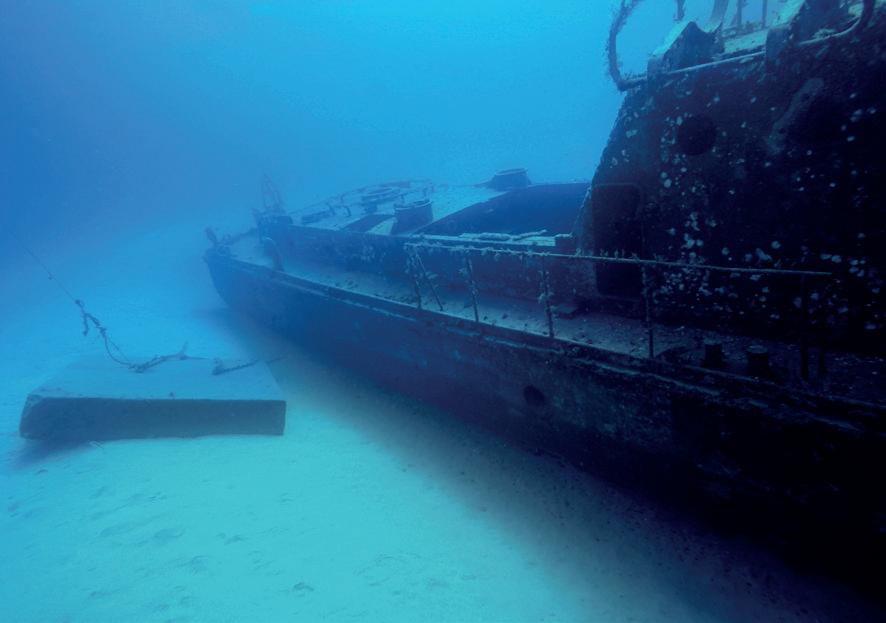

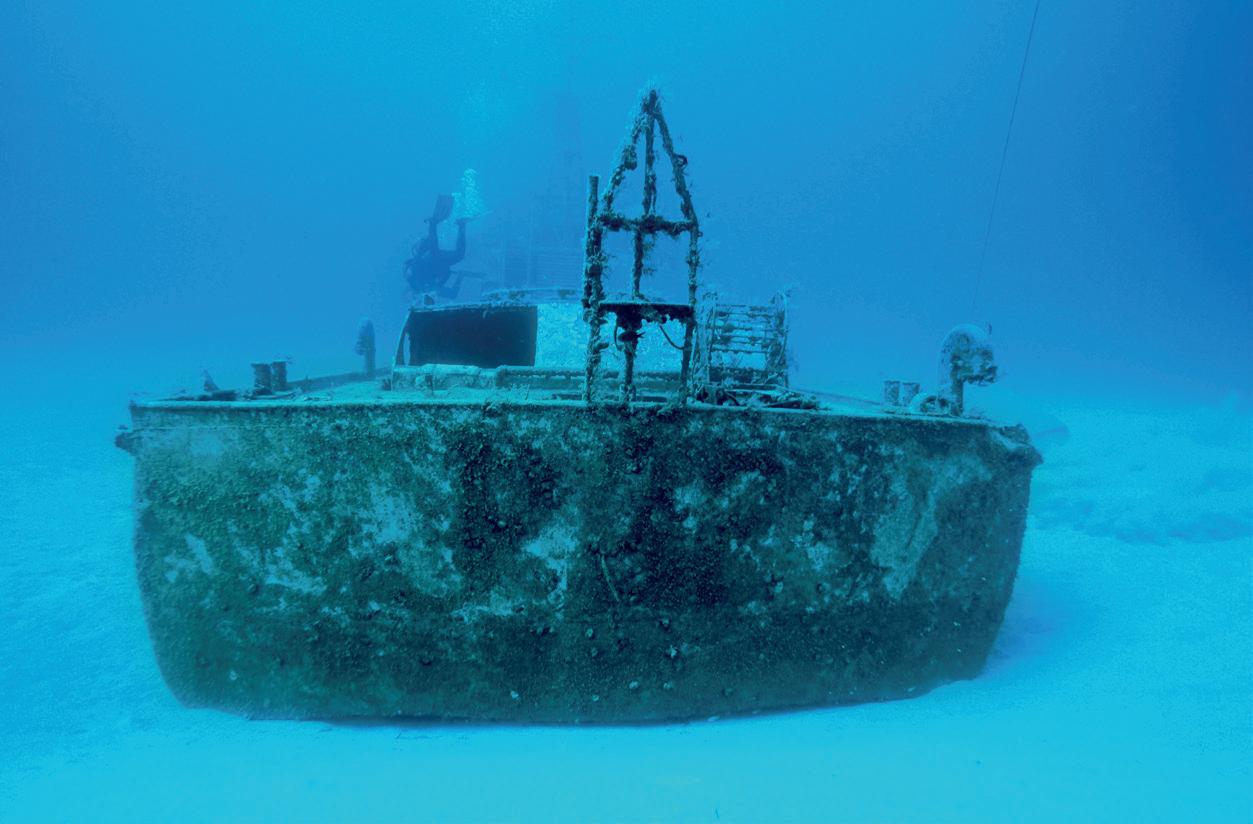
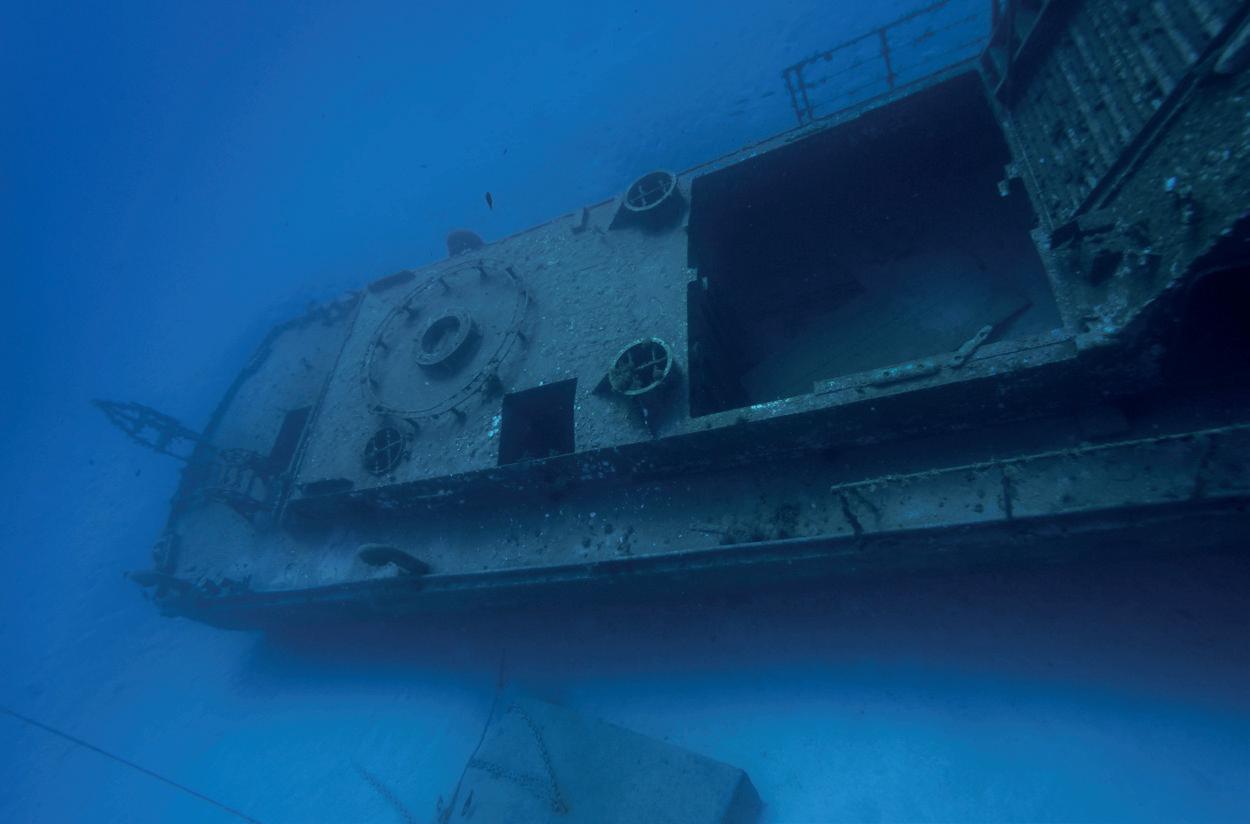
*For freedivers and divers at any certification level.
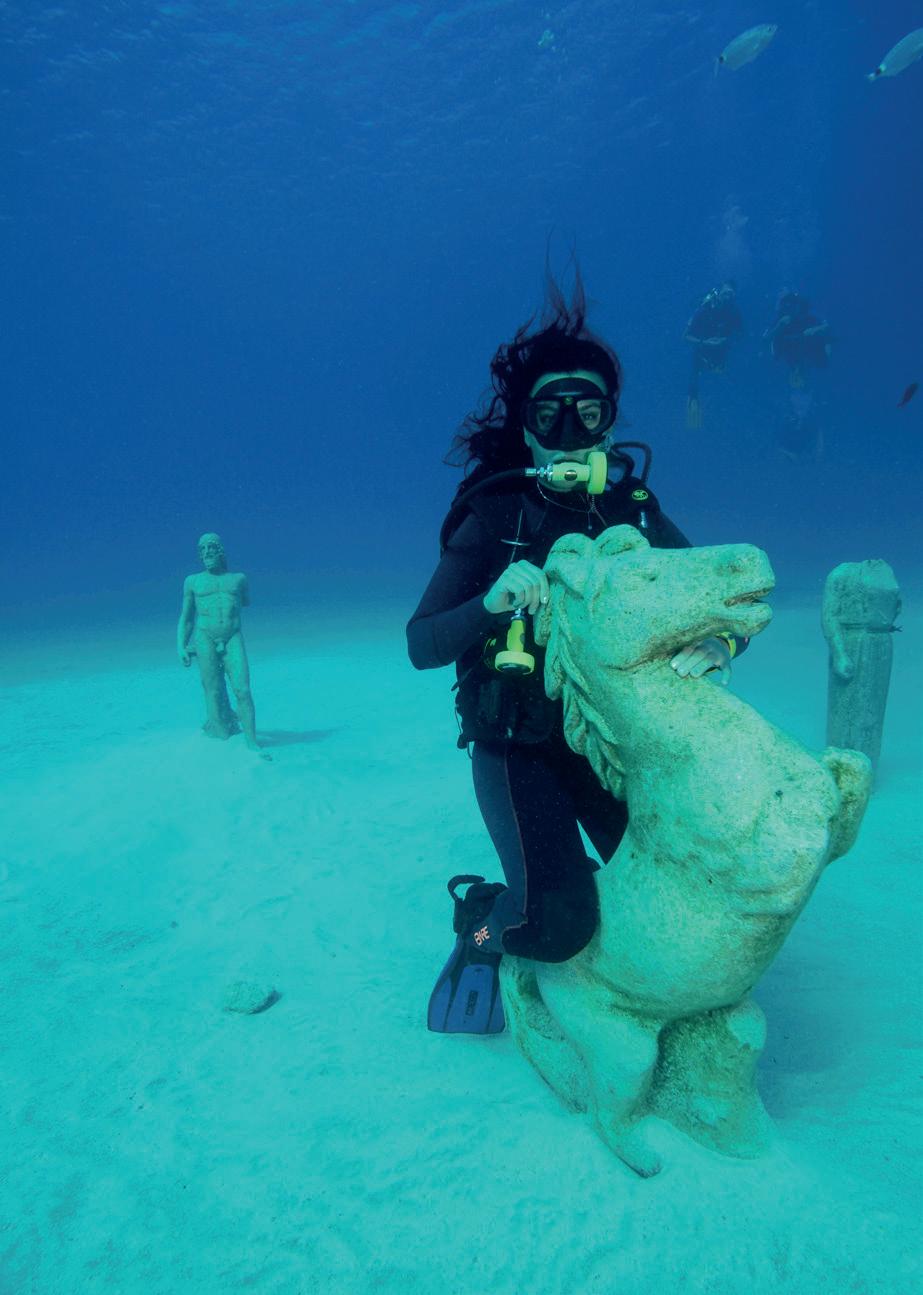

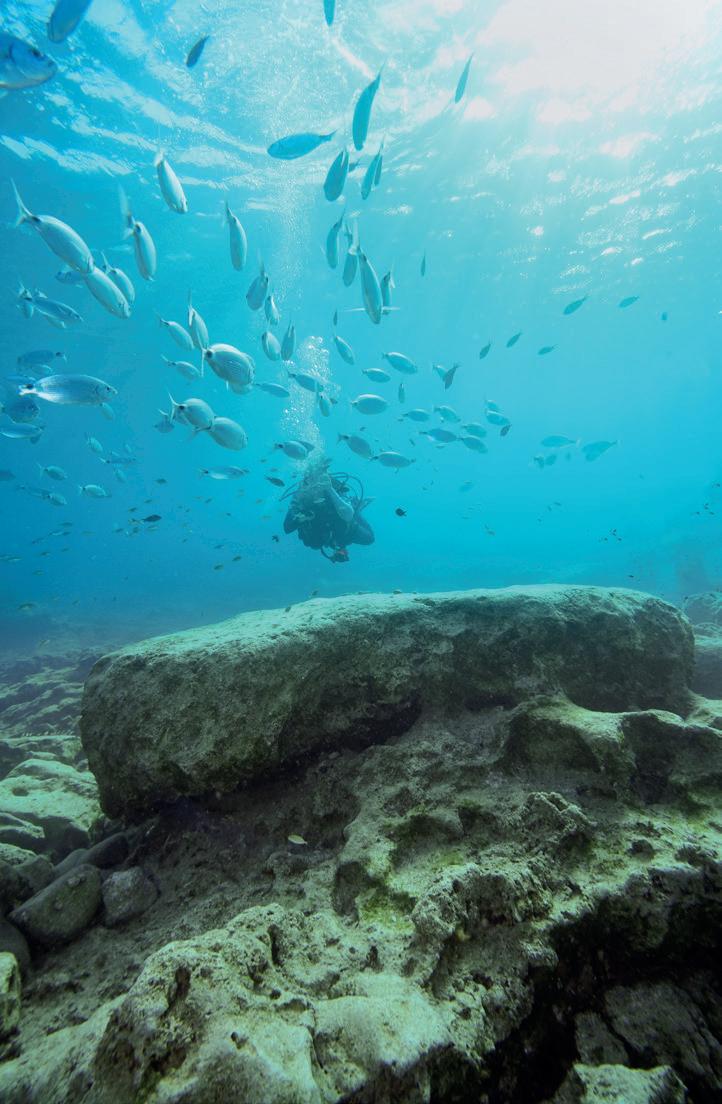

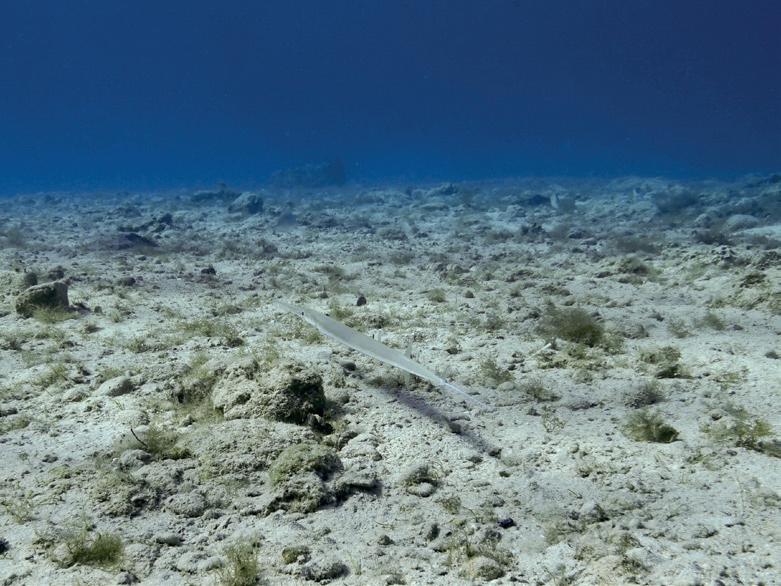

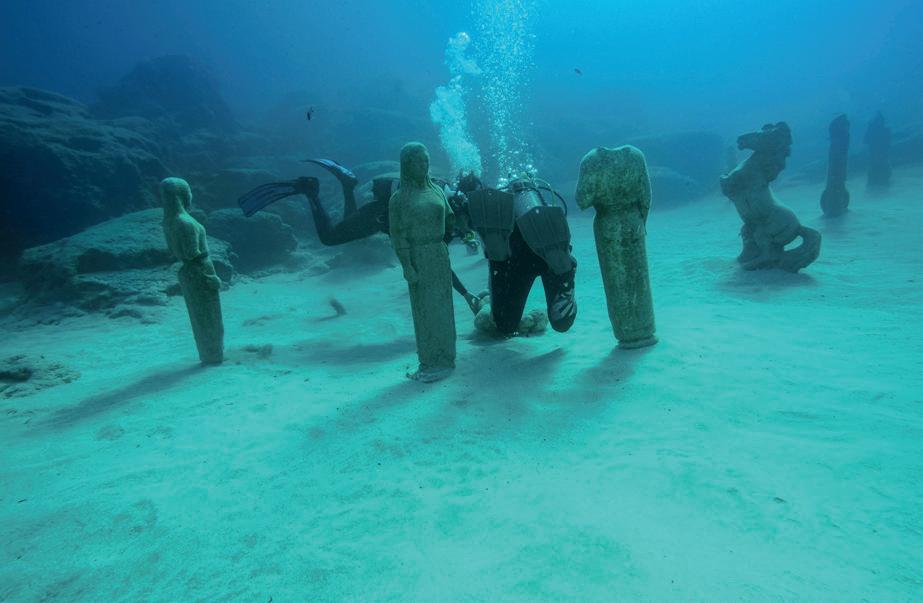

A very charming place. Diving depths here do not exceed 10 m. It is the most famous diving spot to find see turtles. However, please note that seeing one is not guaranteed. You enter the water walking down the rocks directly from the car parking. Basic diving courses are often held here and it’s better to come here as early in the morning as possible (especially during the season) to even hope for a parking space. Initially, we see the fish typical to the Mediterranean Sea. Many amphoras that have been broken and pasted together lie here. Then you reach the patio, housing statues and columns (imitating those from the times of the Roman Empire) with a ratio of 1:0.5 in comparison with the human height. Barracudas, seahorses, cornetfish and, of course, the above-mentioned turtles can be seen here. These are the green sea turtles and caretta caretta turtles. In recent years, this place was very popular with visitors.
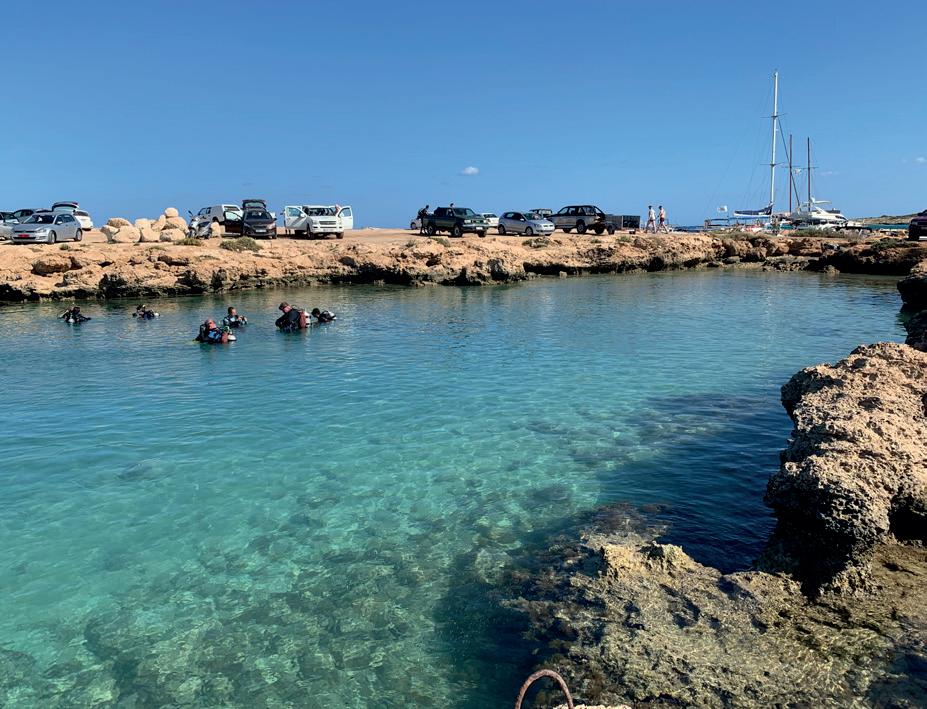
It is located between Ayia Napa and Protaras. Cape Greco is the most eastern part of Cyprus and a beautiful location, where diving is possible in several interesting diving spots. It is warm here and the visibility is very good. We have such places as the “Canyon” with amazing rock formations. There is the “Chapel”, where the descent into the water starts near a church. You can admire broken, ancient amphoras here. You can also find caves, which are some of the most natural and virgin places for diving on Cyprus. Both on land (when driving to the diving spots) and underwater, you will see breathtaking geological formations and a truly crystal sea.
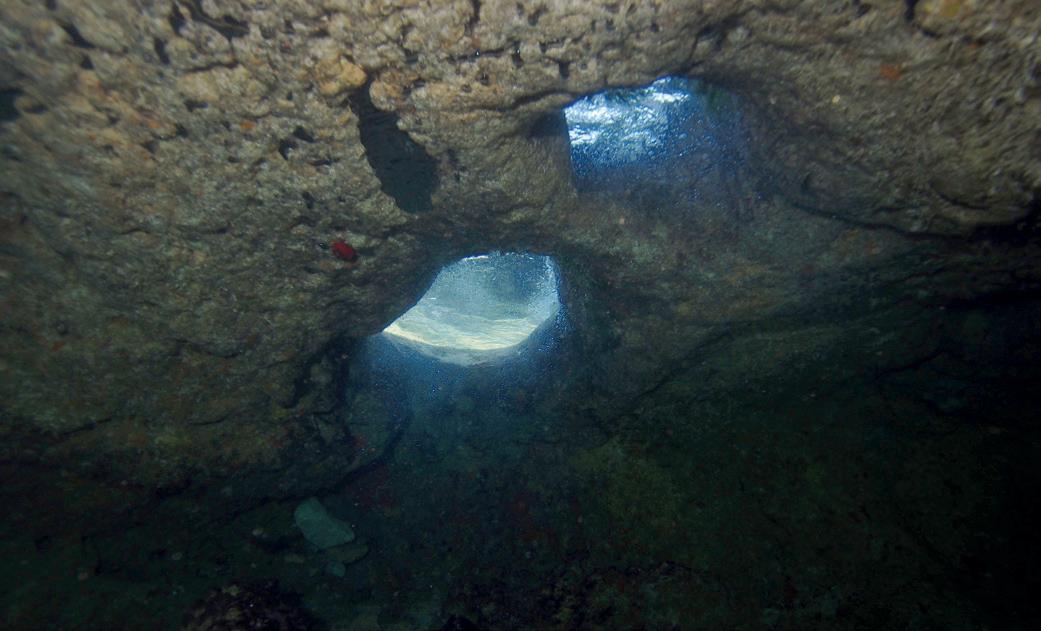
You can hope to meet both small and larger fish here. There are wrasses, common two-banded seabreams, saddled seabreams, lionfish. There are also octopuses and, occasionally, barracudas or small scorpionfish.

Cyprus offers tens of diving spots. We really recommend the Island of Aphrodite, especially to those who like active overland and underwater exploration. Everyone will find something for themselves here, regardless of their certification level. Additionally, this is a land where the sun always shines and you can dive throughout the entire year, although, not all bases are open between November and April.
You can perform some successful snorkeling as soon as at Petra tou Romiou, i.e. Aphrodite’s Rock. There is a sandy and rocky beach with some very nice sunsets here. The same goes for White Rocks (Governor’s Beach), where you will find yourself surrounded by beautiful nature: white rocks, black beach sand and turquoise sea.
However, as we noted at the beginning of this guide, a diver cannot live by diving alone. A diver must eat and drink in order to live and have strength for further exploration. Let’s discover the undiscovered

The most popular dishes of Cyprus are known on a larger scale. Who hasn’t heard of the delicious aubergine baked with meat, tomatoes and béchamel sauce (Moussaka) or the long-roasted lamb with vegetables (Kleftiko)? In this guide, we want to show you the gems of Cyprus that characterise this unique place and complement the multitude of impressions, experiences and emotions associated with the Island.
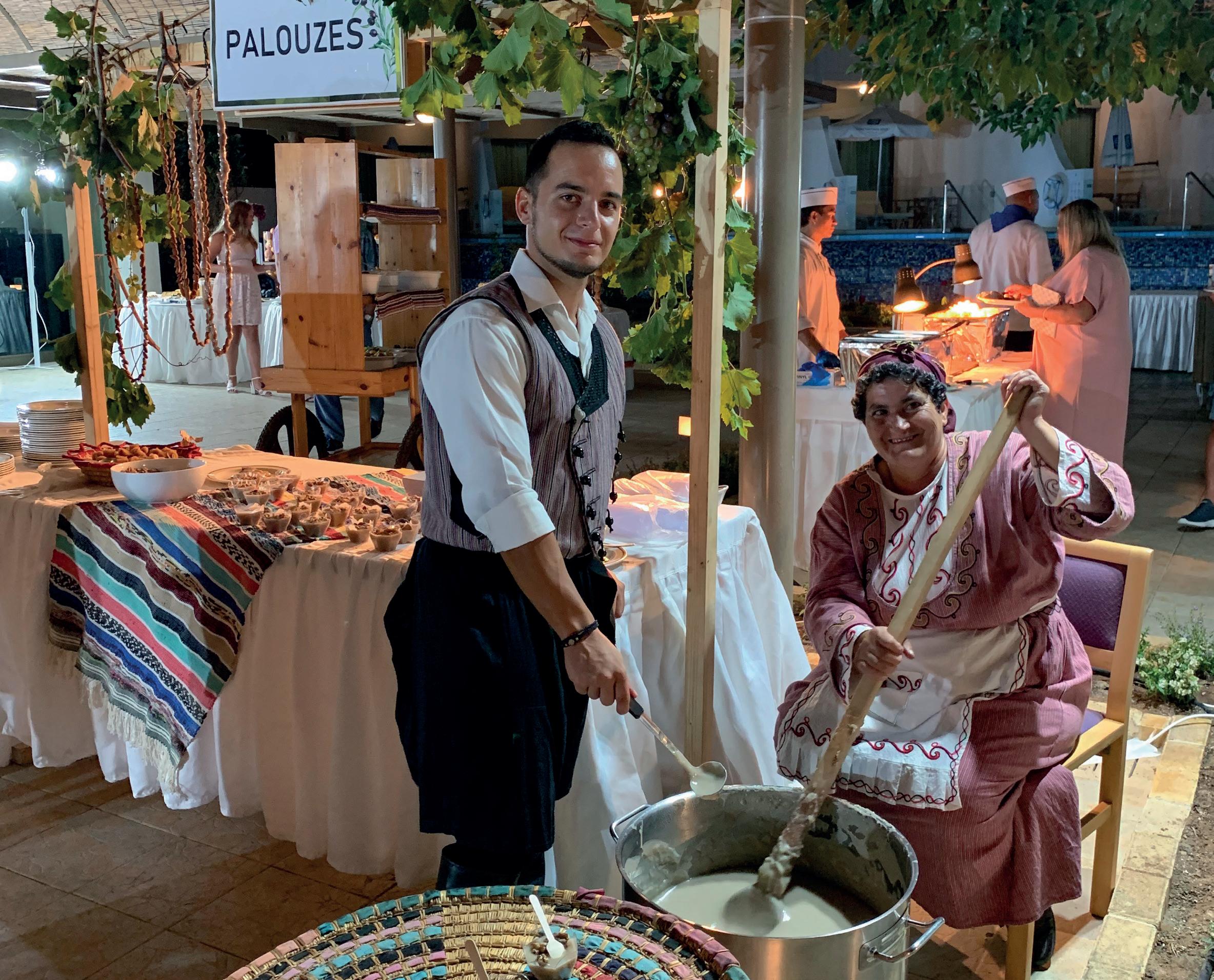
We don’t want to suggest what you should eat depending on the time of day because, for example, Halloumi cheese, perhaps the most recognisable Cypriot product, can be served for breakfast, lunch, dessert, and dinner. No matter how served – cold or hot, sweet or salty – it is delicious

Salty, semi-hard, ideal for grilling, has captured the hearts of connoisseurs. Added to salads, casseroles, is made from sheep’s milk or a mixture of sheep’s, goat’s, and cow’s milk (cow’s milk content cannot exceed 50%). A common addition to halloumi is a mint leaf, and this is due to the fact that in the past mint, in addition to imparting flavour, was supposed to protect the product from spoilage, thanks to its antibacterial properties. It has plenty of nutrients, and it is not fatty, so it can be popular among people who care about a lean figure.
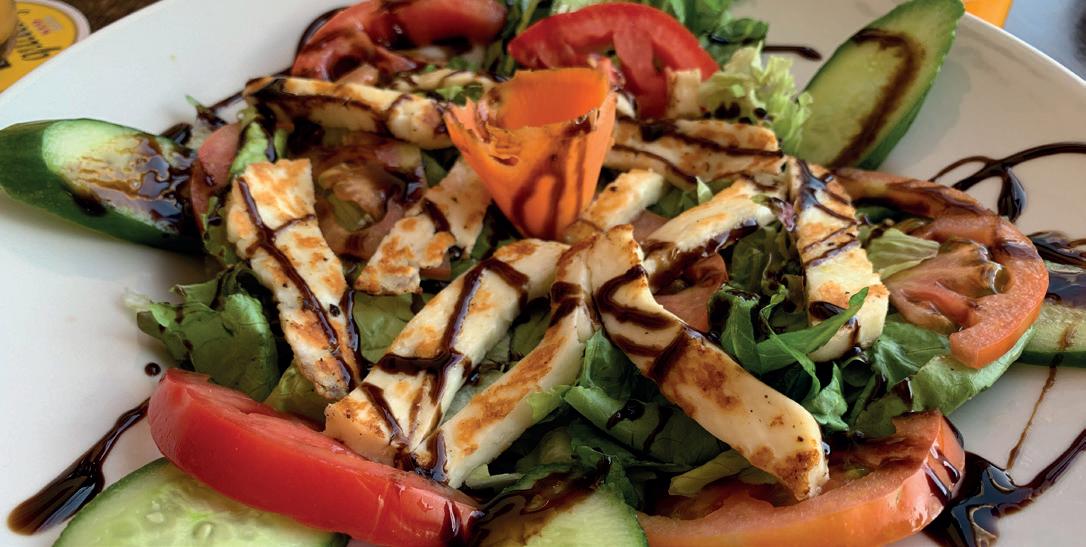
Balls of chopped meat (usually pork, although it can also be lamb) that, along with chopped herbs, are wrapped in caul fat and toasted on the grill. The fat membrane makes the centre incredibly juicy and overflowing with flavour. They are usually served in pita.
This is a popular Cypriot dish made from large pieces of meat, roasted on a long skewer over coals. When prepared traditionally, neck and shoulder of lamb or pork are used. Then, they are roasted on a Cypriot grill called foukou. This dish is also known in Greece, but it differs in taste and the way it is served. Greek ones are usually served with tzatziki and are best known as a fast food version, while Cypriot ones are often the main course at important occasions. In the Cypriot version, the meat is cut into much larger portions and roasted for a longer time at a greater distance from the glowing coals.
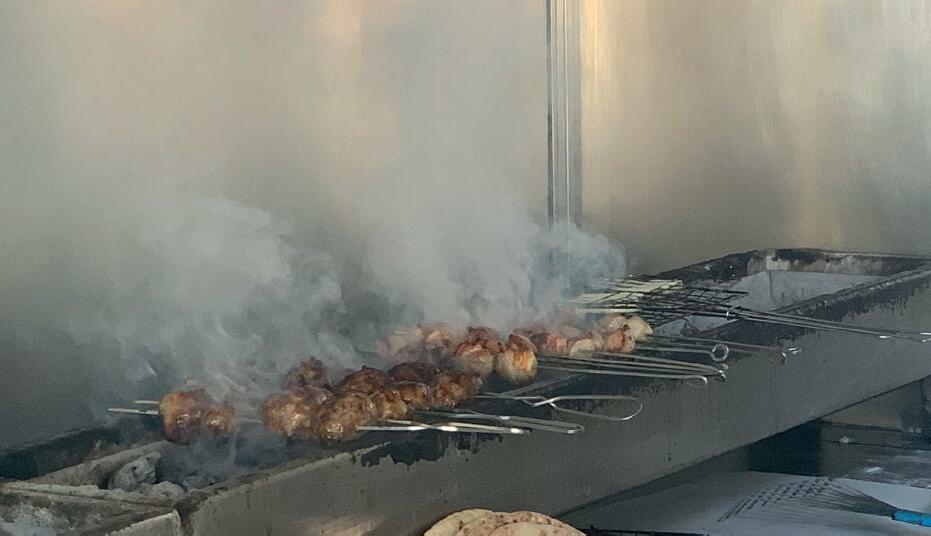
While roasting, the meat is sprinkled with salt and spices (mainly oregano) and coated or brushed with olive oil and wine so that it remains juicy.
These are traditional Cypriot sausages. They are distinguished by the way they are prepared – minced pork is marinated in wine and herbs. The process usually takes several days. Then it is put into cleaned intestines and sausages are formed, after which they are smoked for another few days. They are often served as starters. A similar sausage, but made from beef, is pasturma. It is worth noting that marinating in wine was once an important way of preserving food in Cyprus. And the loukaniko itself is worth tasting precisely because of the strongly piercing flavour of the wine.
They are kind of like Greek dolmades, which are small stuffed cabbage rolls made of grape leaves and stuffed with rice, herbs, or meat. Most often served cold with olive oil, but sometimes also in tomato sauce.
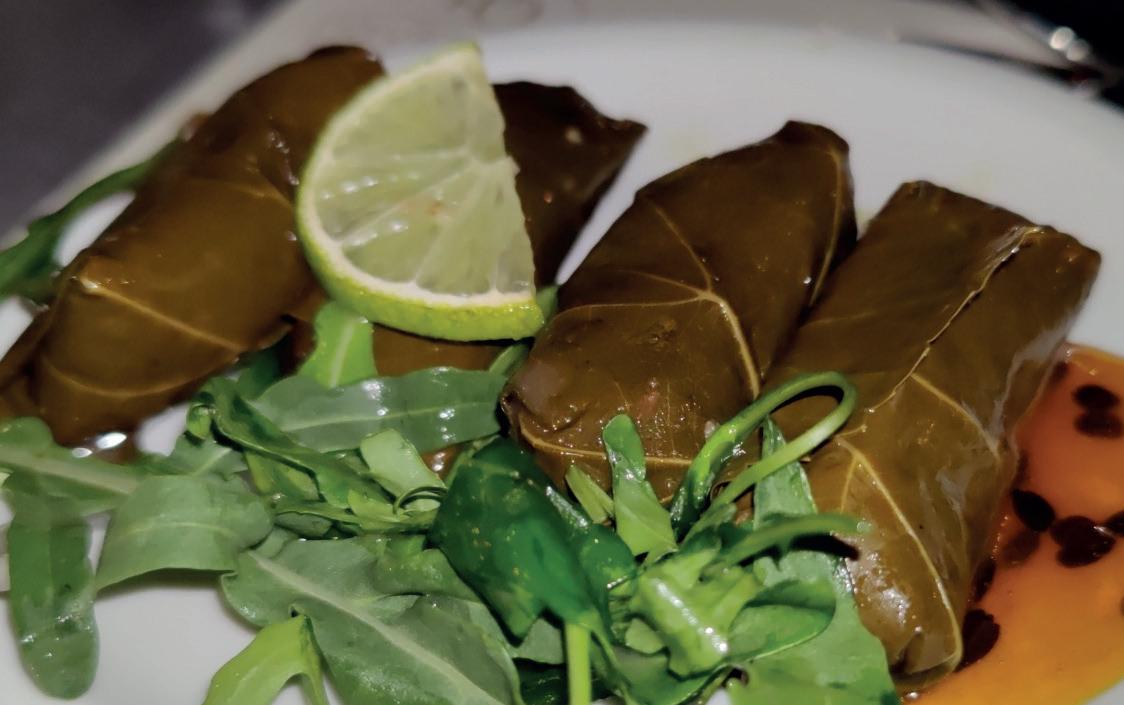

It is an invasive fish species native to the Indian Ocean that has been extensively colonising the Mediterranean Sea for several years. Lionfish are carnivorous and can feed on a variety of fish and crustaceans. Adult specimens prey almost exclusively on fish. They have virtually no natural enemies, due to their venomous spines. They deplete the seas and exacerbate fish shortages, threatening the ecosystem. Culling of these fish is being carried out to control their population. However, some restaurants in Cyprus have introduced them to their menus and it turns out that the meat of this fish is tender and tasty.
The sweets offered by the Cypriots, if one didn’t dive and just sit and eat for one week, would increase their weight considerably. There wouldn’t be enough time to cut the weight... Finger licking good without a doubt! See for yourself!
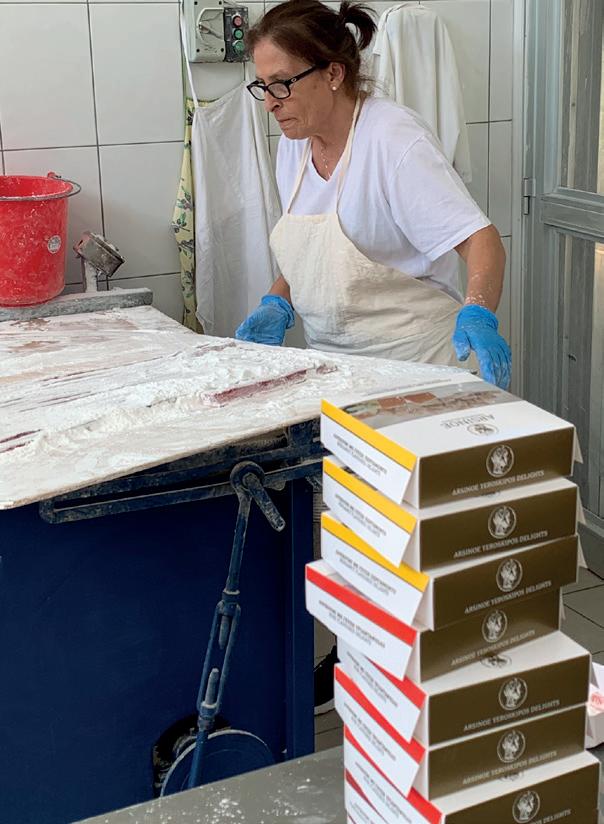
Its history dates back to the 19th century. It was originally made in Geroskipou, a historical site in the Paphos District, whose name is linked to the cult of Aphrodite and is said to derive from the words ‚Ieros’ and ‚kipos’, referring to the goddess’s ‚sacred gardens’ located here. It is prepared with sugar, corn flour, starch, water, and flavourings – usually fruit. The product is vegan and gluten-free. The whole mixture is cut into small pieces and dusted generously with powdered sugar. Among the popular flavours, rose reigns supreme – the original historical loukoumi was prepared with rose flavouring or rose water. Today, there are many flavours available – bergamot orange, anise, strawberry, pomegranate, and many more. There is a place on the map of Geroskipou where loukoumi has been made in the traditional way for several generations, and you can see it for yourself.
The crunchy treat of Cyprus. Sesame and nuts dunked in honey paste, moulded into the shape of bars or
larger tabs that can be broken as desired.
This one is quite interesting. They are made from soaked almonds (or nuts) strung on thread, which are then dipped in a paste called palouze. Palouze resembles jelly in consistency, it is prepared from grape juice (must) which is boiled in a large vat with small addition of white soil called ‚asproi’. It helps to remove any impurities from the juice, as they rise to the surface making it easy to collect. Flour and cinnamon are then added. Soutzoukos are dipped in this mixture several times, and each layer must dry. The result is beautiful beads, some resembling sausages, which are sliced before serving. In this version, they are formed in a yellowish colour. You can also find red ones – formed from pomegranate juice, and brown ones (almost black) – from carob, about which you will read below.
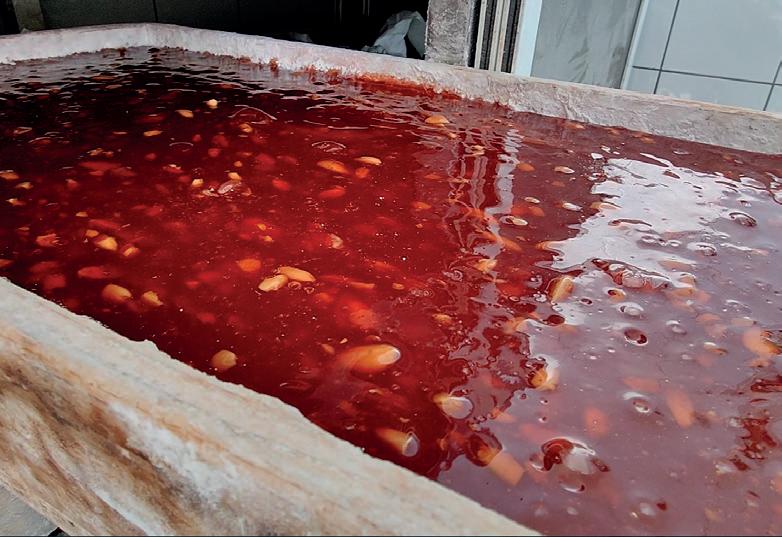

This is a very sweet dessert made from properly crushed phyllo dough, which is formed in long threads,
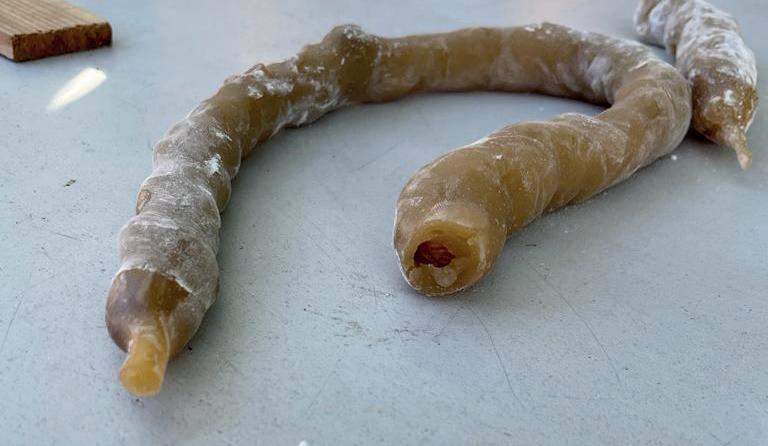
hence the puffy appearance of this dessert. Kataifi is soaked in sugar syrup and is often filled with a mixture of nuts and topped with honey.
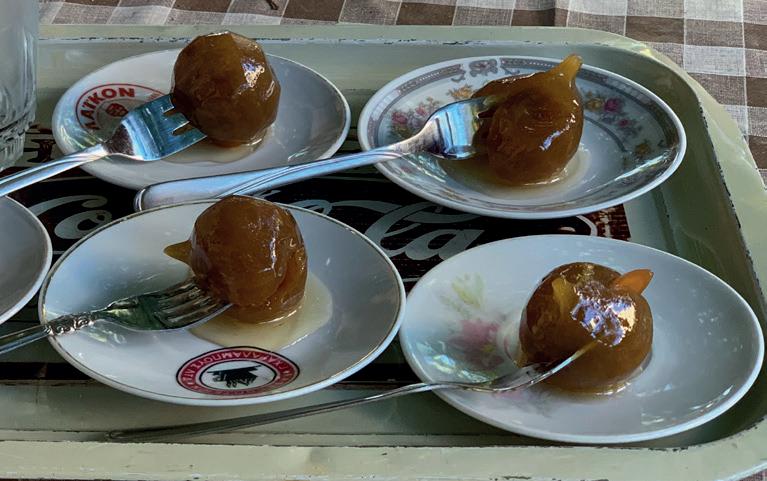
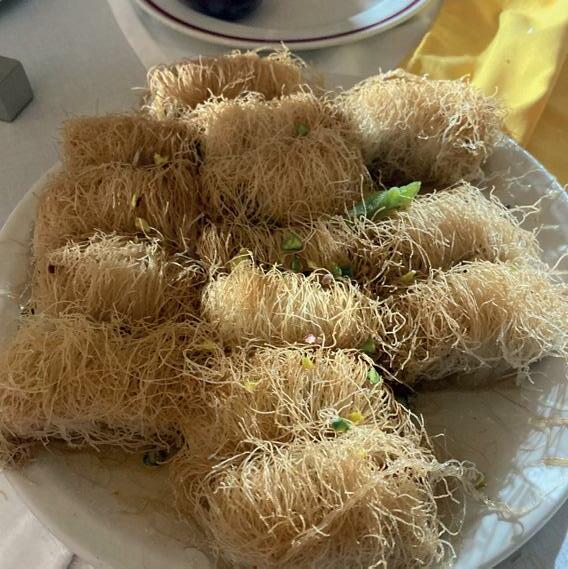
A homemade treat with a stunning flavour and crumbly texture. The green nuts are harvested when they
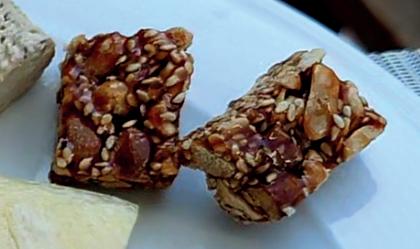
are already large but have not yet formed a shell. They are boiled in a sugar broth and pasteurised in jars. Cypriots also preserve other fruit this way, e.g. figs, berries, apricots, apples, pears and cherries; they are a great addition to Cypriot coffee.
Small, sweet, deep-fried pies, stuffed with anari cheese (a fresh mild whey cheese produced in Cyprus) and cinnamon, topped with rose or bergamot water. The wonderful aroma of this dessert cannot be described in words, it has to be experienced!
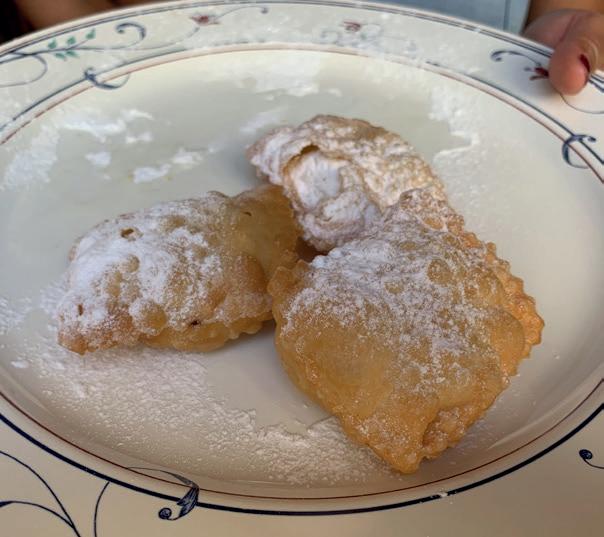
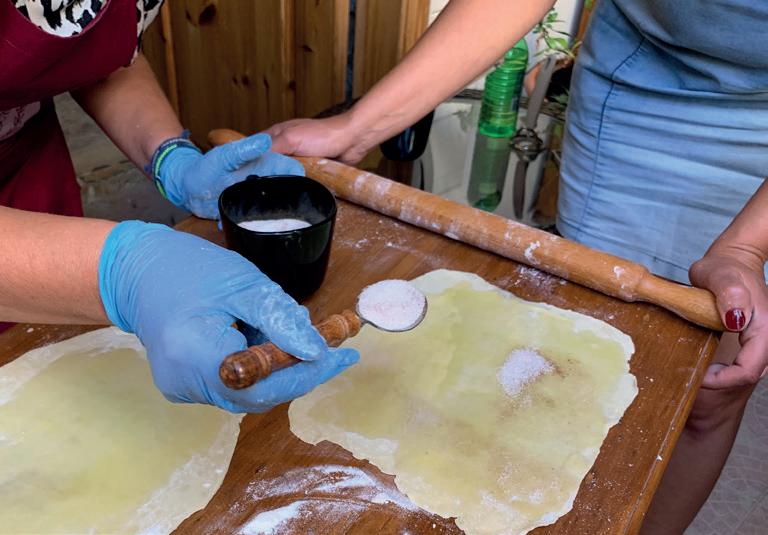
Made from the same dough as bourekia. The simplicity of this product captivates with the pleasant taste of cinnamon. Slices of dough are spread with olive oil, sprinkled with sugar and cinnamon, and then folded into pockets. They are fried for a while in a pan and then eaten with taste.
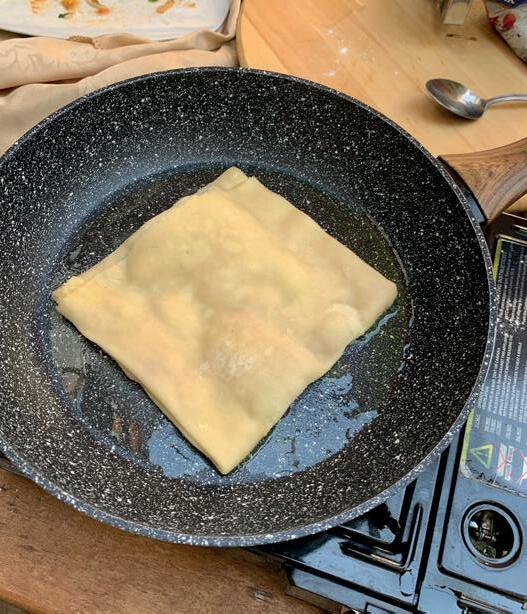

Walking through the streets of Cyprus, one may come across trees with hanging pods resembling beans. These are the carob trees, and it is from their pods that
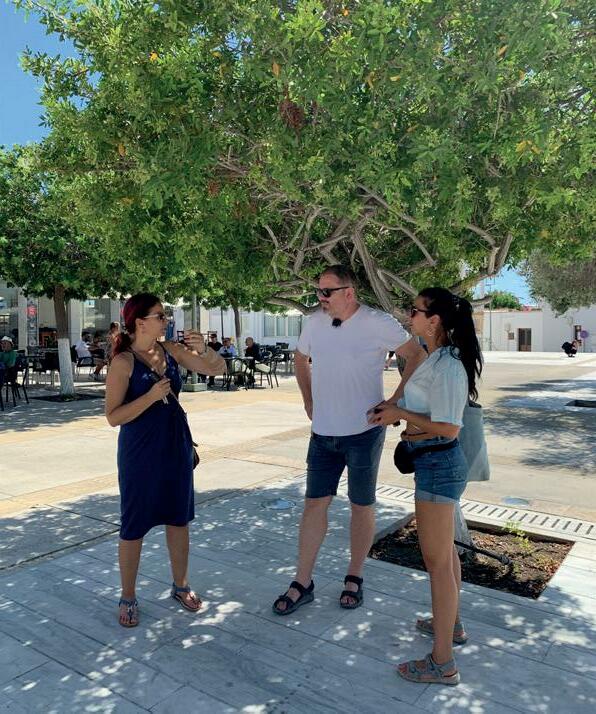
carob (locust bean flour) resembling cocoa, as well as carob molasses are extracted. Carob molasses can be a substitute for honey, toppings or syrups. It has a naturally sweet taste and is a rich source of vitamins and minerals. It is used in confectionery and as an addition to cakes and breads. Carob gum is used as a thickener. It is also interesting to note that in ancient times pharmacists and jewellers used the hard seeds of the carob tree as weights, because they considered the weight of each seed to be almost identical – 0.2 g. The carat is a unit of mass used in jewellery to determine the size and value of gemstones and pearls. The word ‚carat’ comes from the Greek keration, meaning carob.
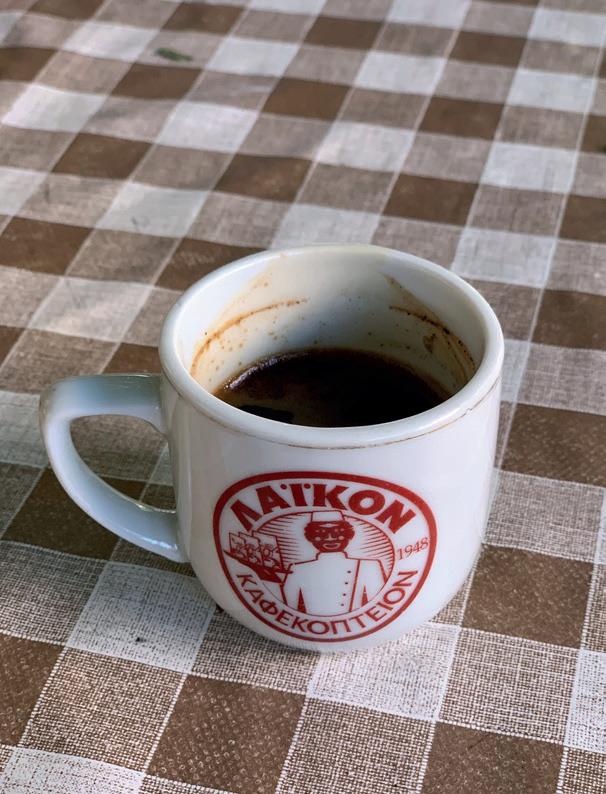
Traditionally prepared in a small pot. The degree of sweetness must be determined when ordering – as the sugar, like the coffee, is poured into cold water and then boiled, usually three times. It is served in a small cup, just like an Italian espresso, with the difference that there are grounds at the bottom of the cup.
Cyprus is filled with captivating places in the narrow alleys where you can stop and drink freshly squeezed pomegranate juice. It is characterized by incredible sweetness and a wealth of valuable minerals and polyphenols – antioxidants. The ruby colour attracts the eye, the small amount of calories cleans the
conscience after a filling meal. Orange juice is more popular and exceptionally sweet in the Cypriot sun.
The history of winemaking in Cyprus dates back more than 5,000 years. The southern slopes of the Troodos Mountains are stretches of vines for wine production. Endemic varieties such as Yiannoudi, Mavro or Xynisteri crossed skilfully with international varieties produce an amazing result of deep, balanced flavours that take us to the magical world of Aphrodite.
The pride of the Cypriots is Commandaria – potentially the oldest wine in the world. It is a sweet wine, a coupage of two local grape varieties: xynisteri and mavro (yes, yes –white and red). The process of growing and making wine has strict rules. The fruit is harvested in mid-September and then dried in the sun for about two weeks. The grapes are then fermented at a low temperature for two to three months to age for a minimum of two years in oak barrels, after be ing strengthened with wine distillate to around 15%. The sweetness of this wine steals the hearts of gourmands and foodies.

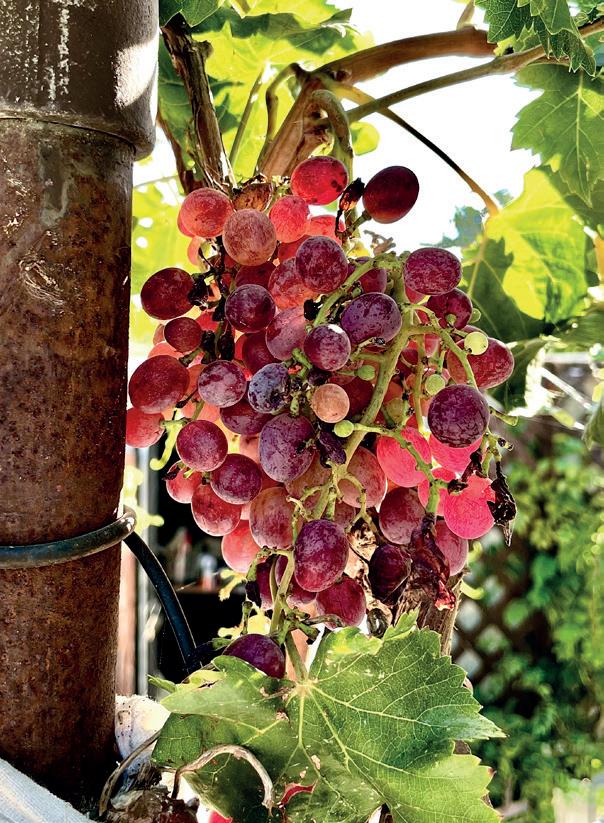
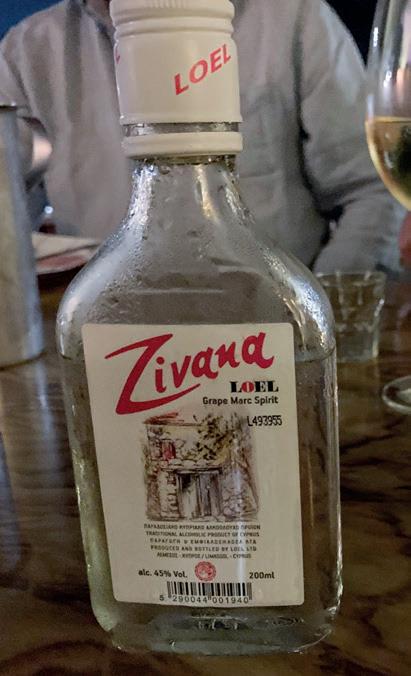
Often referred to as firewater. In simplest
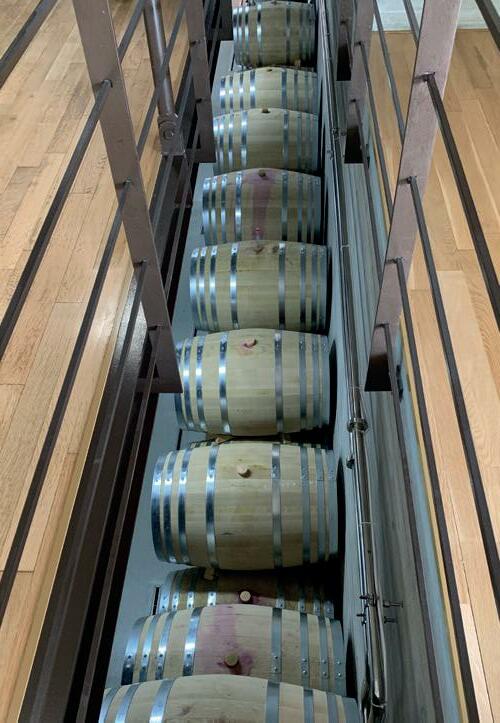
terms, it is moonshine made from the skins and seeds of grapes of certain strains. It is often produced at home – to improve digestion after a satiating meal or to warm up (low temperatures occur in the Troodos Mountains). The alcohol content of this product is 43–99%.

Tyrimos Seafood Restaurant
Agapinoros 71, Paphos 8049
Great food, very good reviews. The portions are fresh and large. Also open in the off-season and locals dine here.
Kyrenia Fish Tavern
Amathountos1, Mouttagiaka 4531 (close to Limassol)
It may not look very inviting from the street, but the food they serve here is excellent. Portions are large and is everything fresh. Plus, the view of the sea.
Koutourou Ouzeri 25 Martiou, Paphos
Good local and Greek food. The food is tasty and the atmosphere friendly. You can sit quietly until closing, sipping on commandaria wine.
Nusa Beach Bar
Piale Pasa 11, Larnaca 6028
A bar with a friendly atmosphere, in the harbour, very close to where you depart for Zenobia. Good snacks, charcuterie platters, drinks, cold beer and freshly squeezed juices. Although, with a large number of guests, you might have to wait a while for service.
Fish House Restaurant
Ayia Napa Harbour, Ayia Napa
You will find very good food here. The restaurant can be entered from the harbour and street/plaza side. The service is professional, the food is fresh and tasty.
All the dishes and flavours here are unique, like Cyprus itself. Your taste buds will be satisfied for a long time, and while you can probably replicate some of the dishes in your own kitchen, they will never be as delicious as they are here – in Cyprus.

Akamas Paphos
Pissouri Bay Limassol Larnaca Ayia Napa Protaras
1. 2. 3. 4. 5. 6. 7. 1.

The amazing and still wild still place in Cyprus. It is the westernmost part of the Island. The coastline is jagged and therefore very interesting. In the middle of the peninsula stretches a chain of mountains covered with forests, mainly pine and juniper bushes. There are also eucalyptus, cypress, and strawberry trees. Botanists have counted more than 500 plant species here, and there are more than 160 species of birds, reptiles, amphibians, and other animals. To be honest, it is only by hiking that you can discover the true richness of Akamas. Here we have more than 50 km of trails of various difficulties. They can also be covered by bicycle, horseback, quad bikes, or off-road vehicles. On the side of the town of Polis, the Gulf of Chrysochou with turquoise water extends.
Since Cyprus was preparing to join the European Union, most of Akamas has been proposed for protected status. There are beaches here that have been designated as turtle egg-laying areas. Among other things, there is a small cove with crystal blue waters, named Blue Lagoon which is practically inaccessible from the land side due to a high cliff. It can be reached by boat. There is also a gorge reaching up to 260 metres high, full of steep rocks. At its narrowest point, it is 10 metres wide. Wild chamois can be found in it.
Akamas is the perfect place for those who like peace and quiet, well, unless you spot a passing quad.
Legend has it that it was here that Adonis met the goddess Aphrodite. Tired of hunting, he drank water from the spring, and they fell in love. Well, today, anyone who drinks from this ‚’source of love’’ will fall head over heels in love with the person they see first. Be careful to see the right one!
Paphos is quite compact. From the harbour there are streets with bars and restaurants where you can stop and relax. Two steps separate us from the sea, where we can bathe at any time, and among the aforementioned bars there are numerous souvenir shops.
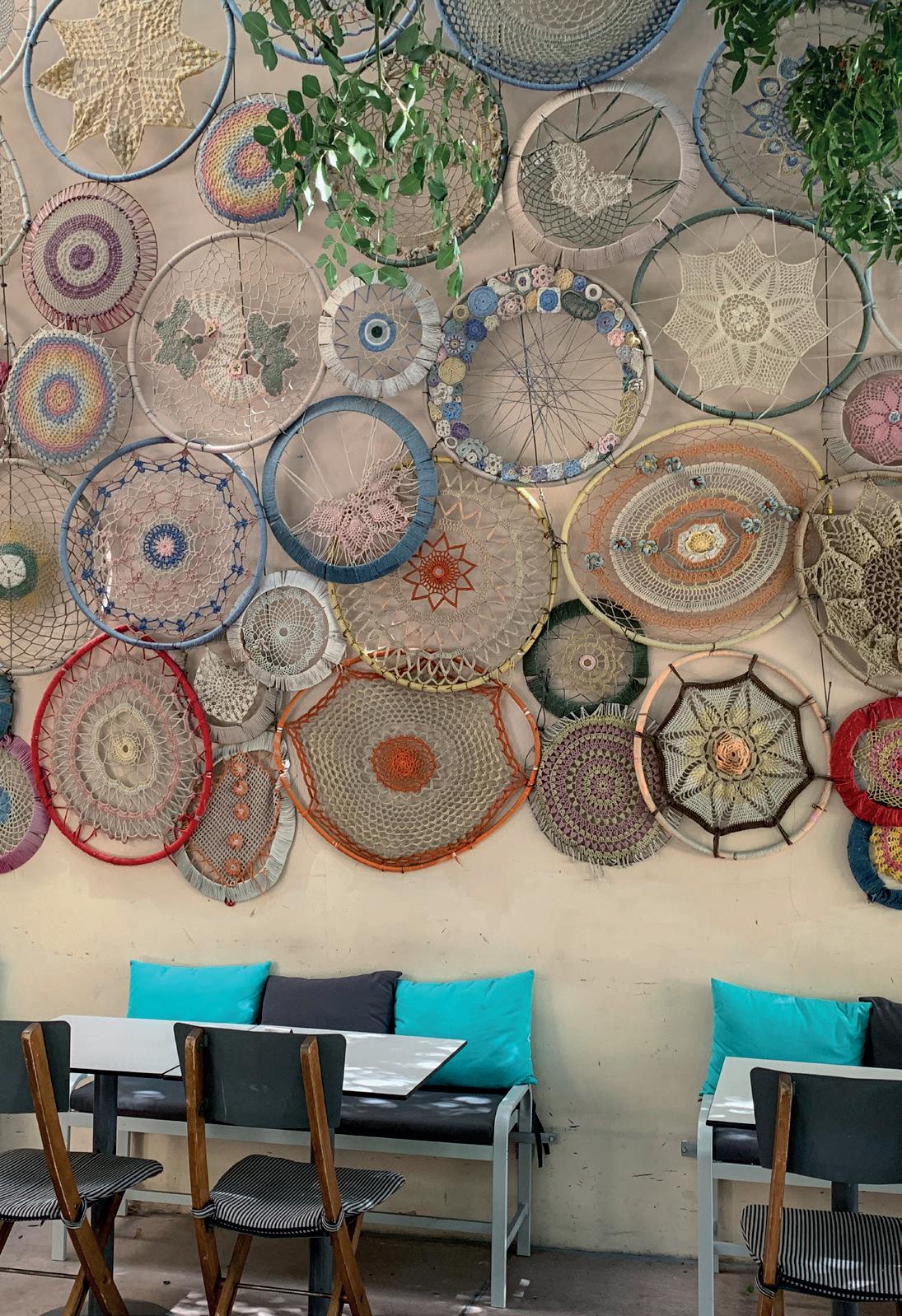
The harbour itself is worth visiting. Both fishing boats, diving boats and quite interesting yachts moor here.
Just above the harbour is the old Castle, which has been destroyed many times in the past, and was a fort surrounded by a moat to protect the harbour. It was built during the island’s affiliation to the Byzantine Empire. It was rebuilt in the 13th century and destroyed in 1570, then modernised. It later served as a prison, and during the British takeover of Cyprus it was used as a salt ware-
The part for non-diving companions or for divers after the divePaphos
house. This changed in 1935 and since then it has been treated as a cultural heritage site. It can be visited inside, and you can climb the walls which offer a view of the Mediterranean Sea and Paphos.


The Archaeological Park is also located near the Port. It is an amazing complex comprising ancient Greek and Roman city ruins. It is worth remembering that, with virtually no shaded areas, it can be quite a hot challenge in summer. The foundation of Paphos dates back to the 4th century BC. Within the park you will find the remains of a 2nd century AD villa with preserved mosaics. One of them is accessible and you can stand on it with your bare feet, take a few steps, close your eyes and travel back in time nearly 2,000 years. An interesting site is the Odeon, also built in the 2nd century from carefully chiselled limestone blocks. It is worth setting aside a minimum of 3–4 hours to explore the complex.
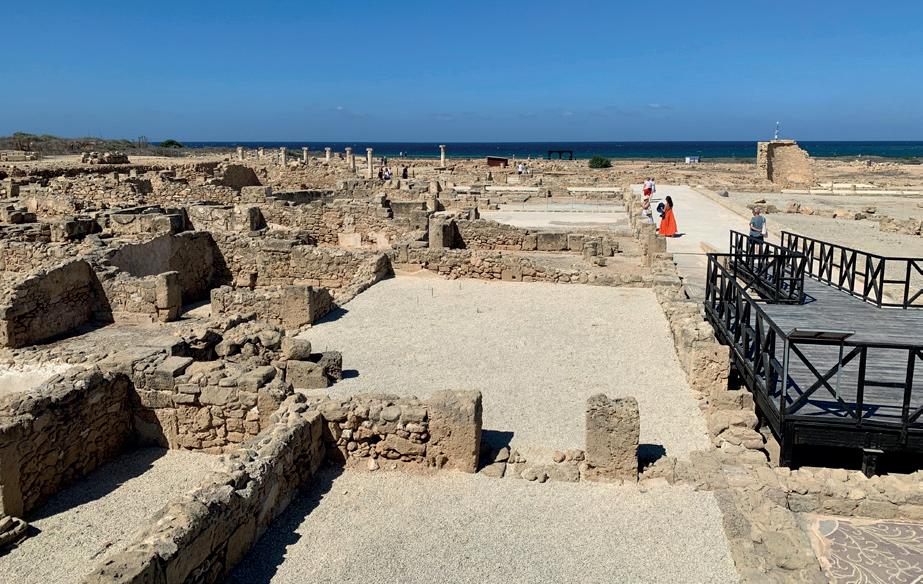
from the seashore and from Poseidonos Avenue are the atmospheric ruins of a rustic church, built in the 13th century and famous for its colourful mosaics on the floor. It is an early Christian Basilica that you can enter. The adjacent grounds include the Saint Paul’s Pillar, at which, according to tradition, he was flogged before the Roman governor converted to Christianity.
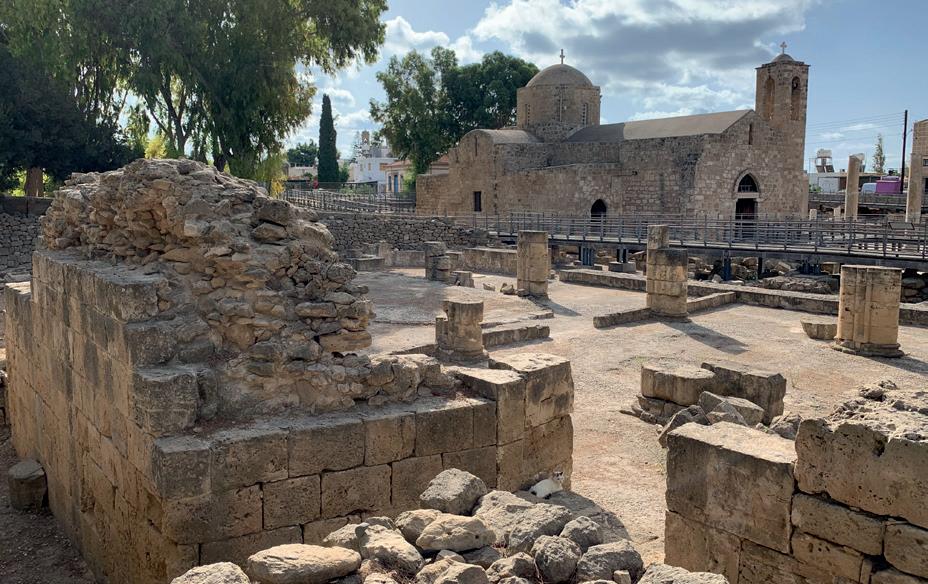
a short

The traditional Sofia and Andreas house is located outside Paphos, in what is known as the Undercity. If you have time, come here. It’s not just about the delicious, warmly served halloumi (one of the region’s most distinctive cheeses), the figs plucked straight from the tree, the homemade bread and butter, or the Greek salad, grilled meats, and Cypriot pot coffee – necessarily black. It’s about the atmosphere of the whole house, the interior with its furniture and objects of traditional and folkloric designs and lots of

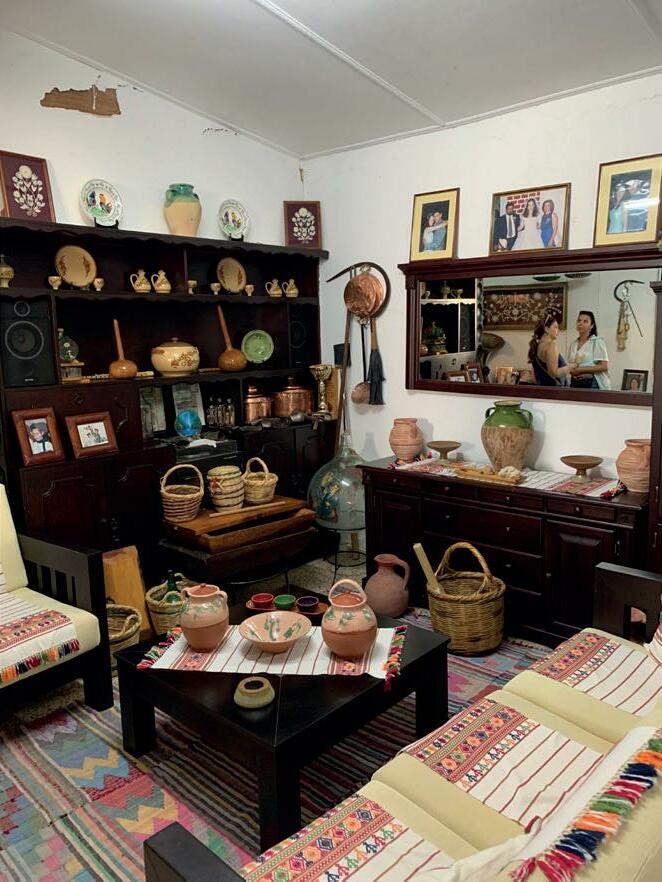
family heirlooms (almost like a museum), the tranquillity, and a kind of a stopover. It’s something like visiting your grandparents in the country house.

We wrote about this place in the diving section of the guide. There is a very charming Columbia Beach Resort. A place away from the towns and situated on a rocky sandy beach with several bars and watersports equipment hire. Good for accommodation by the way, and it’s a 5-minute walk from anywhere in the resort to the sea.
LIMASSOL is the second largest city in Cyprus. It has a population of over 100,000. In addition to a beautiful promenade full of shops, bars, restaurants, and a harbour, there is an Archaeological Museum and a castle, as well as beautiful beaches.
The attractions near the city are also important: Petra tou Romiou, also known as Aphrodite’s Rock, the Sanctuary of Apollon Hylates, Kolossi Castle, or finally the vineyards and the Troodos Mountains.

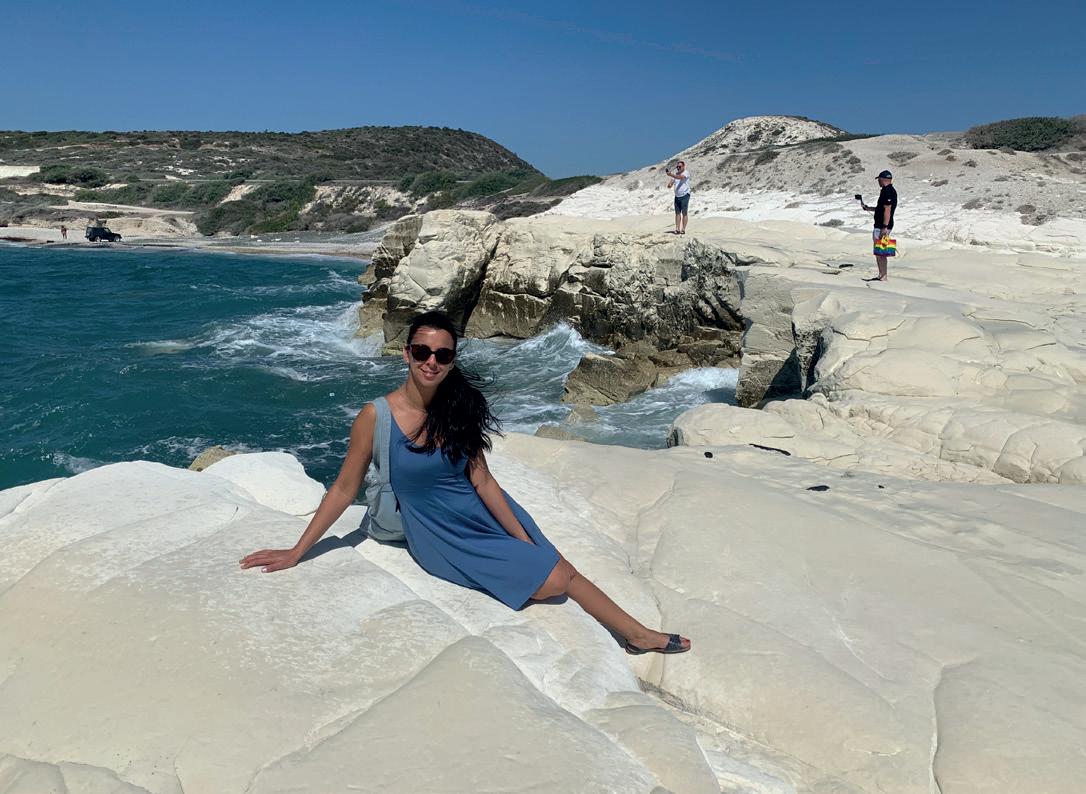
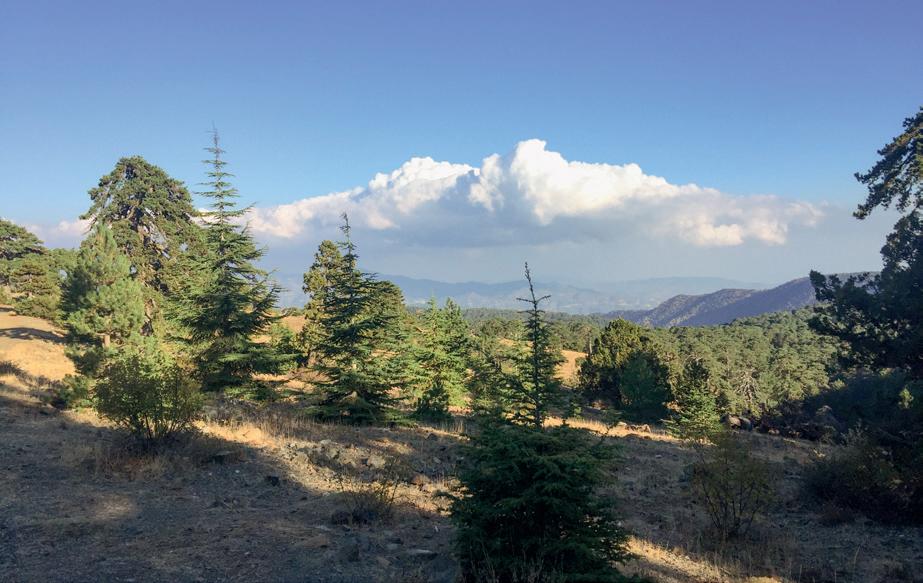
We especially recommend the vineyards, which stretch for miles, and in each of them you can taste white and red wine, served at the right temperature. In Cyprus they know a thing or two about wine, we wrote about it above on the occasion of Cypriot cuisine.

The Troodos Mountains with the highest peak Olympus (1950 m) are home to charming mountain villages, vineyards, waterfalls, monasteries, and churches. It’s better to pack some warmer clothing, as it can be cooler in the higher parts than on the coast. It is worth mentioning that sometimes during winter it is possible to ski here. The most famous is Caledonia Waterfalls. The beginning of the trail is at the restaurant (1200 meters above sea level) where we park the car. We go up a route of about 1.5 km along a stream, in the midst of a fairly dense forest. The route is charming, although it can be slippery in some places. In many parts we cross a mountain stream, on which small wooden bridges have been built to facilitate trekking. The ascent takes about 45 minutes.
White Rocks – an interesting place, quite wild, with no infrastructure. There are two beaches nearby – fa-
mous Governor’s Beach and the lesser-known Kalymnos Beach. Turquoise waters of the sea run into white rocks and black beaches. It looks amazing and charming. When the sea is rough, the waves crash on the small cliffs and splash in all directions.
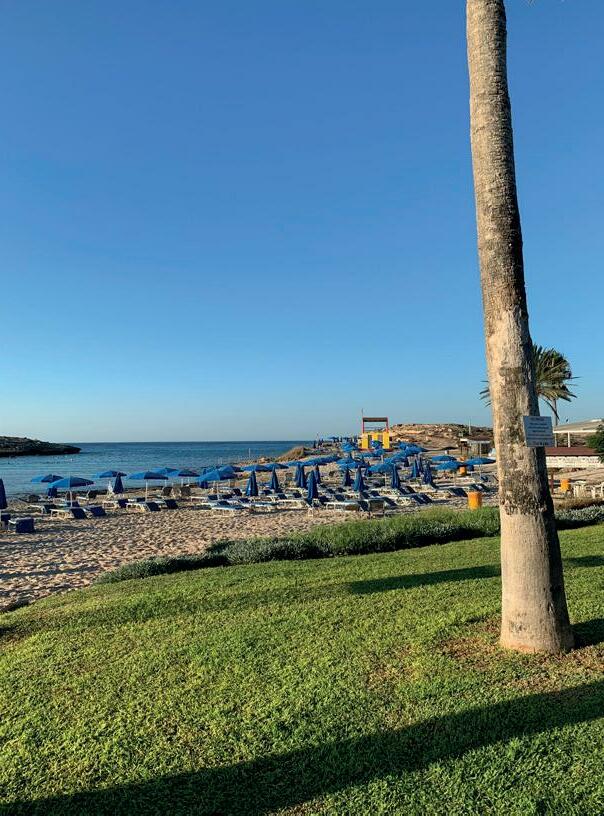

Interesting place worth visiting is the Church of Saint Lazarus, built in the 9th century and restored in the 17th century. Inside is an icon from the 17th century depicting the resurrection of Lazarus, as well as 18th century Iconostasis.
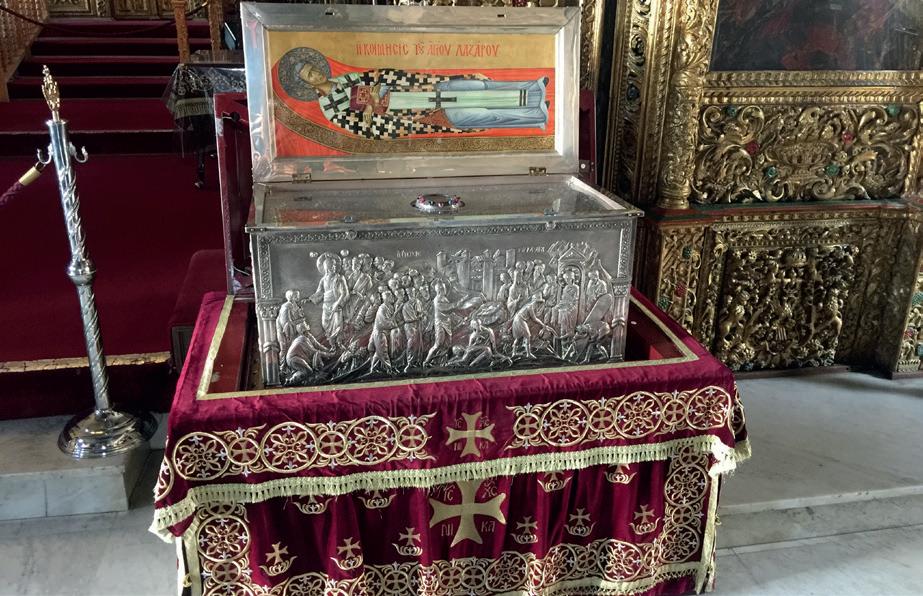
At the end of the promenade is the medieval Castle, formerly built for defence purposes as a fort. In the 20th century it served as a prison. It now houses a museum, and plays are held in the courtyard.
From the promenade one can also enter the Marina, a port from which dive boats depart, but taking a sunset cruise is also possible. Among other things, there is the atmospheric bar we wrote about above.

Salt Lake and Park is a wildlife attraction. The park is quite monotonous, while the lake is dried up in season. In summer, the white vanilla „mud” area stretches as far as the eye can see, and in winter it transforms into a shallow lake where flamingos can be spotted. The best time to see those animals is from November to March. About 90 species of birds live in the park and lake area, but it is the flamingos that attract tourists the most.
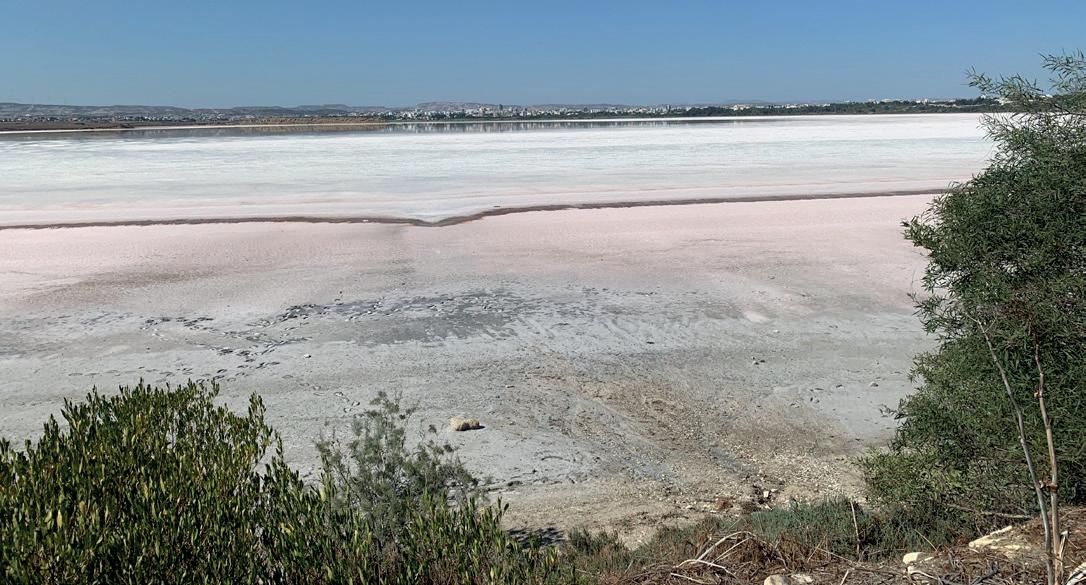
AYIA NAPA is a rather noisy place. If you like to party, then you have come to the right place. Just walk up to the main square of the city Ayia Napa and choose one of the clubs or discos – now you can party until morning. There is also a water park in the city and beware – not far away there are amazing tombs from the Roman period. They were carved into the rock and are proof that there was a settlement here in ancient times.
The area from Ayia Napa to Protaras is the Cape Greco National Park. These are some of the most beautiful natural attractions on the Island of Aphrodite. Ideal for swimming, lounging, and jumping into the clear azure waters. There are numerous hiking and cycling trails in the park. Unfortunately, we may be exposed to an encounter with a quad bike. Finally, there are places where you can simply sit on a cliff and gaze out to sea over the horizon.
PROTARAS attracts with its beautiful beaches and crystal waters. It is the warmest place in Cyprus. The town was once covered with windmills, some of which still stand today and give the place its unique atmosphere. Artefacts found and researched suggest that at the turn of the eras there was a famous port town here called Lefkola. An interesting feature is the show taking place in Protaras which is a combination of water dance, music, and animation.


